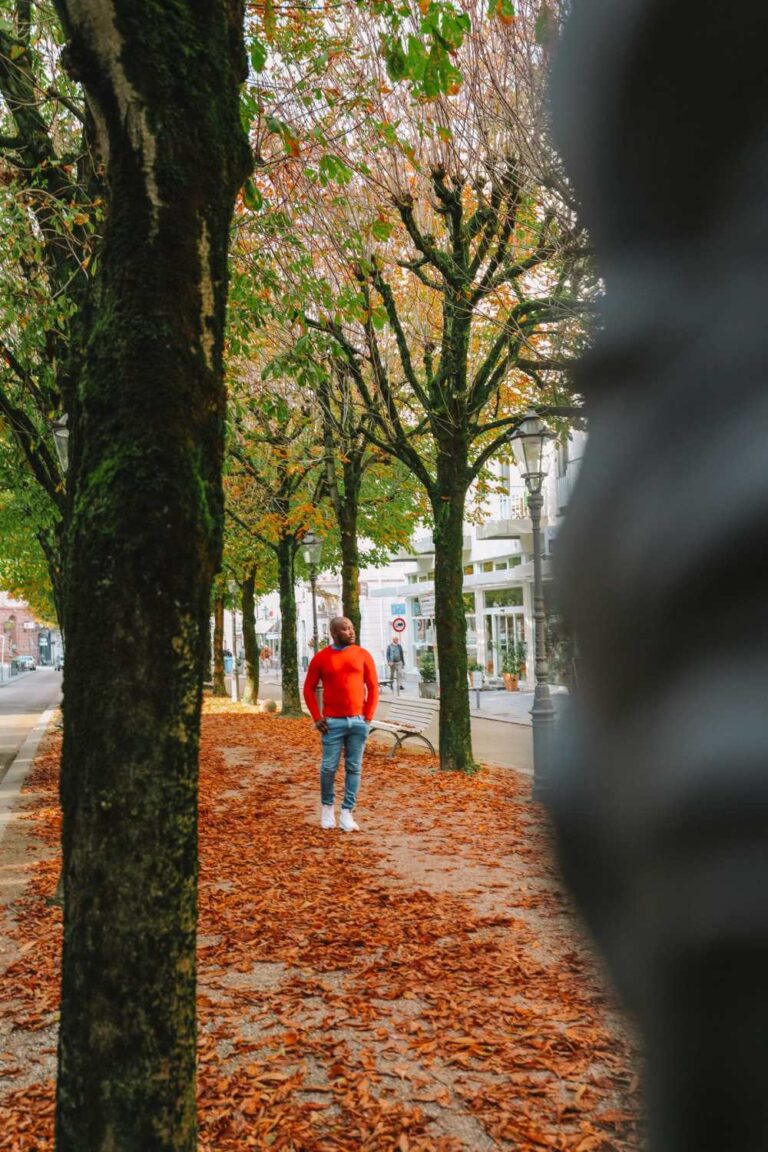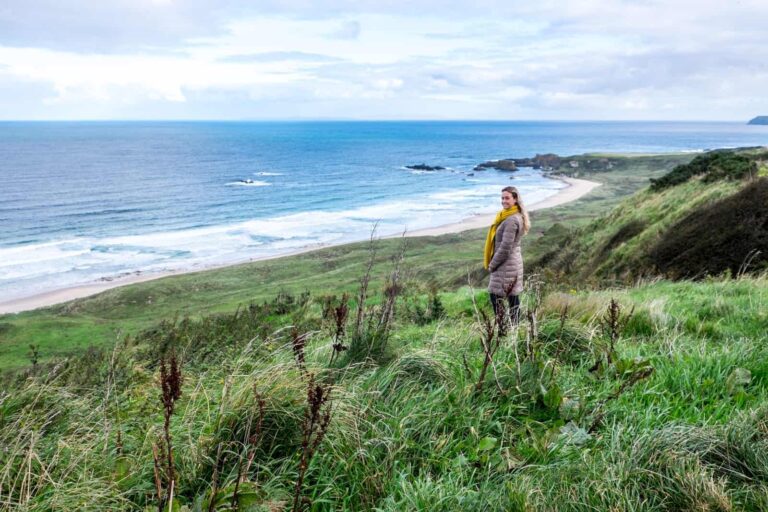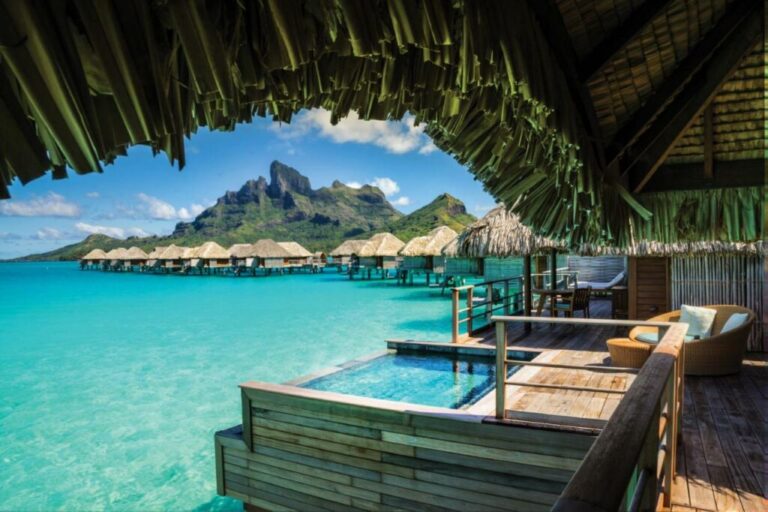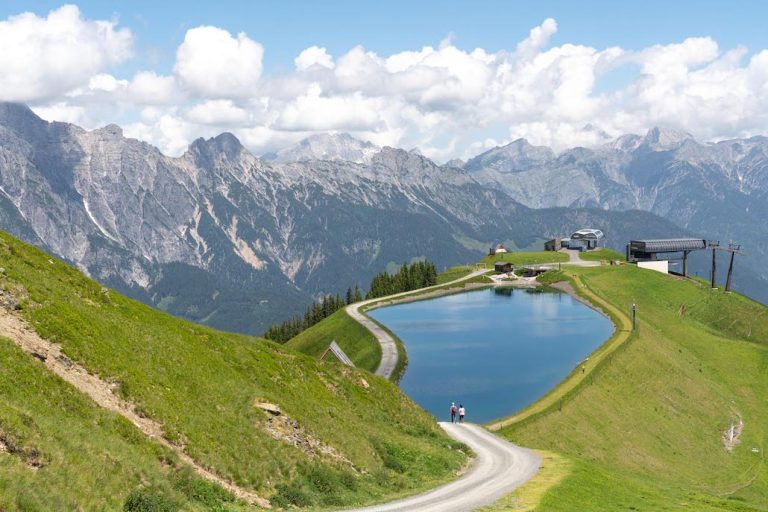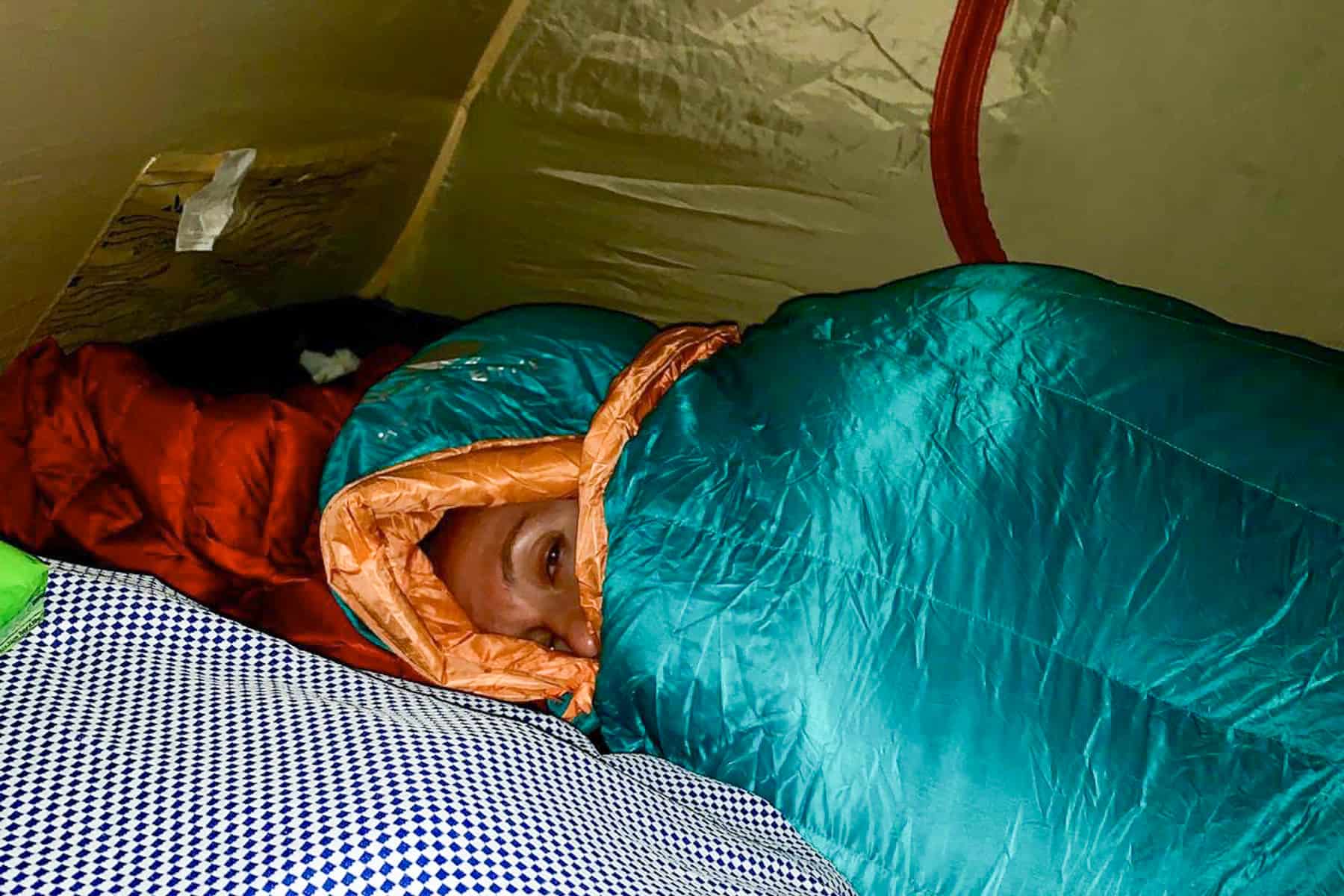
An outstanding team of 35 guides and porters accompanied the 11 trekkers in our group. Every day the ‘G Fighters’ (as is the affectionate name given to them) carried all our camping equipment, mess tents, food, water and a 10kg bag from each person. It would have been 33, but with a unanimous agreement to hire a portable toilet for the duration of the trek at an extra cost, we were able to employ two extra porters.
The Honest Guide to Climbing Kilimanjaro
An outstanding team of 35 guides and porters accompanied the 11 trekkers in our group. Every day the ‘G Fighters’ (as is the affectionate name given to them) carried all our camping equipment, mess tents, food, water and a 10kg bag from each person. It would have been 33, but with a unanimous agreement to hire a portable toilet for the duration of the trek at an extra cost, we were able to employ two extra porters.

- 6 hours of trekking
- 12km
- Sleep at 3,100m
Taking slow, measured steps during the trek to Kilimanjaro are as important as staying hydrated to prevent altitude sickness. Trekking is not a race or an opportunity to show off your sporting prowess – altitude can cripple even the most athletic.
Your success at getting to Summit isn’t only about your physical fitness and your luck at the time with how altitude treats you.
There are seven ways to get up Kilimanjaro, passing from forest to moorland, alpine desert and rocky hinterland to ice glaciers and snow at the Summit.
An Ordinary Visa (Single Entry) costs . Applications can take up to 10 days to be approved, so give yourself plenty of time in case of any issues or if you will need to resubmit your application. You will receive an e-mail with a User Identification Number from which you can keep track of the progress.
Kilimanjaro is an intense and compounded expedition set to a disciplined pace, rather than a gentle ramble through a national park. Everyone in my group found different days difficult and what’s a breeze for one is the worst day for another. Overall, with each day carefully paced, it’s more physically exhausting because of altitude, rather than distance, and you have no control when your body decides what to make of a particular trail that day.
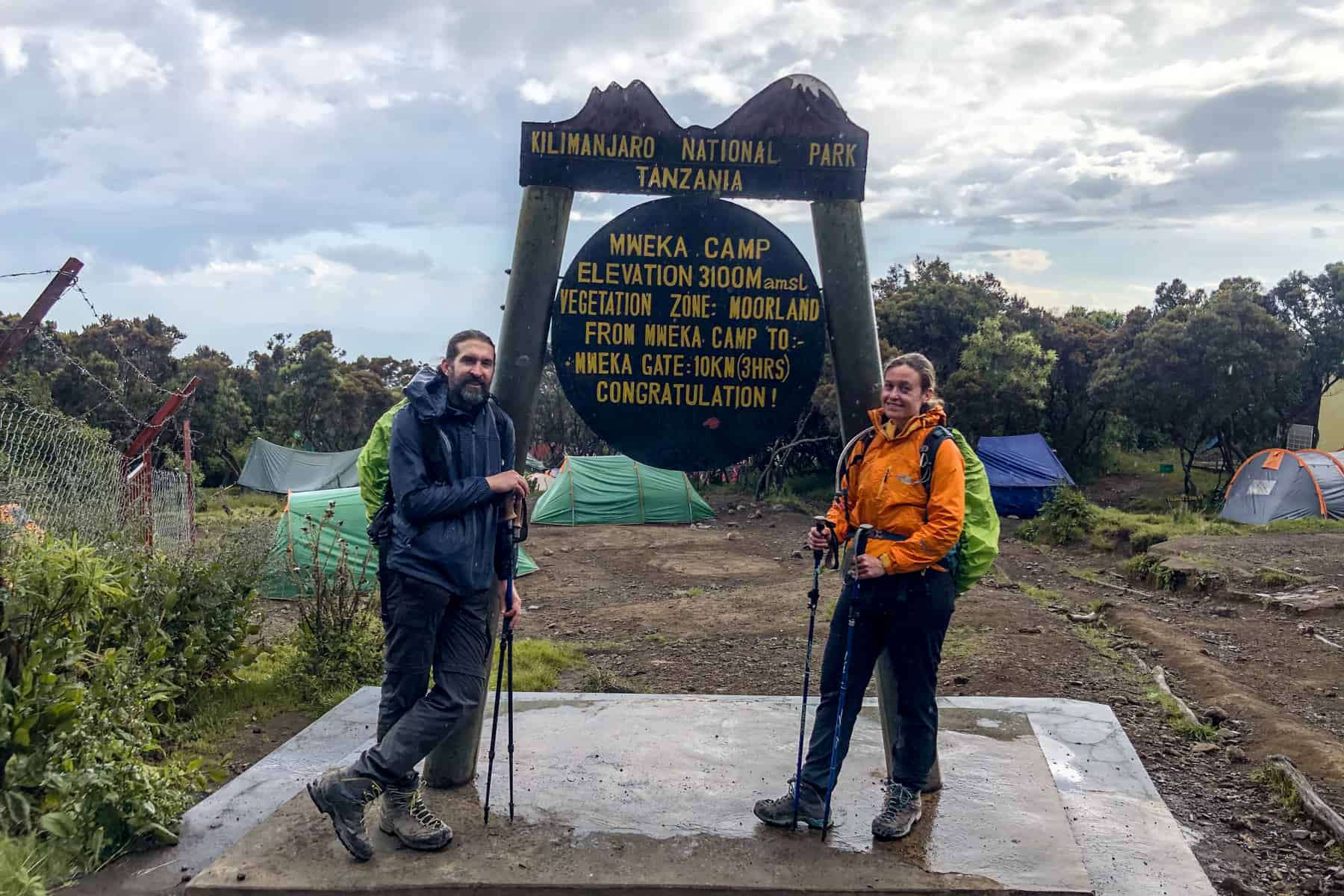
Our cosy set-up at Mti Mkubwa Camp
Day 8: Mweka Camp to Moshi
- 3-4 hours of trekking
- 10km
Moshi is the town closest to Mount Kilimanjaro National Park and is a 50-minute drive from Kilimanjaro airport. You can usually arrange a pick up via your tour company, or arrange a taxi via your hotel starting point.
You will have two bags with you during the trek.

The mountain, with its five different geographical systems, means you’ll pass a full spectrum of humid tropics to minus temperatures, regardless of what time of the year you visit.
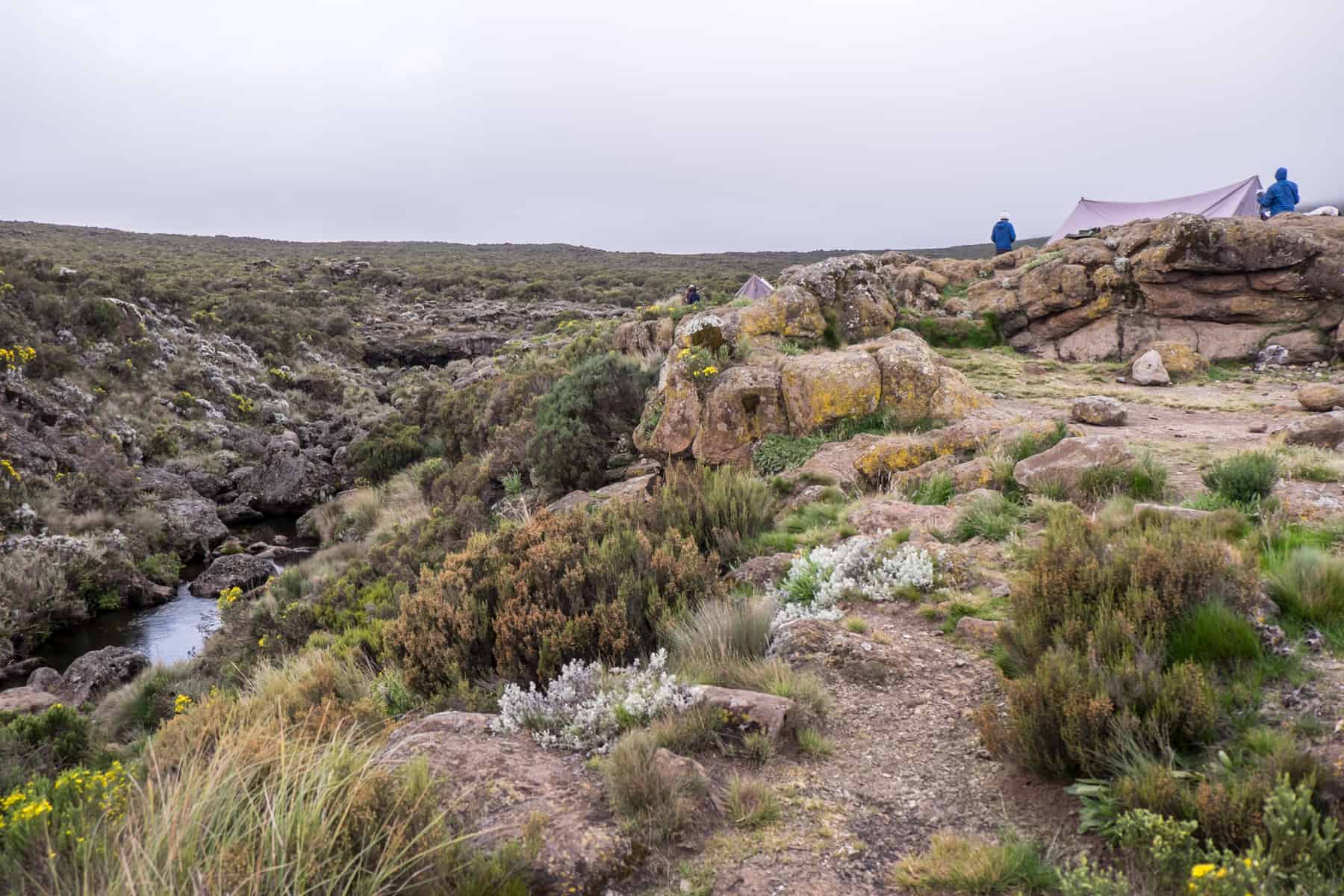
You must have a travel insurance policy that not only covers the usual less, damage, in-patient medical treatment and repatriation, but which also includes mountain ascents and mountain rescue.
You are going to be trekking across a full spectrum of ecosystems and weather conditions, so it is vital to be prepared for the extremes – hot and sunny, cloudy and chilly, rainy and windy and snow and minus temperature chill. You may encounter all of this in one day, so being prepared limits feeling uncomfortable and miserable, especially at Summit.
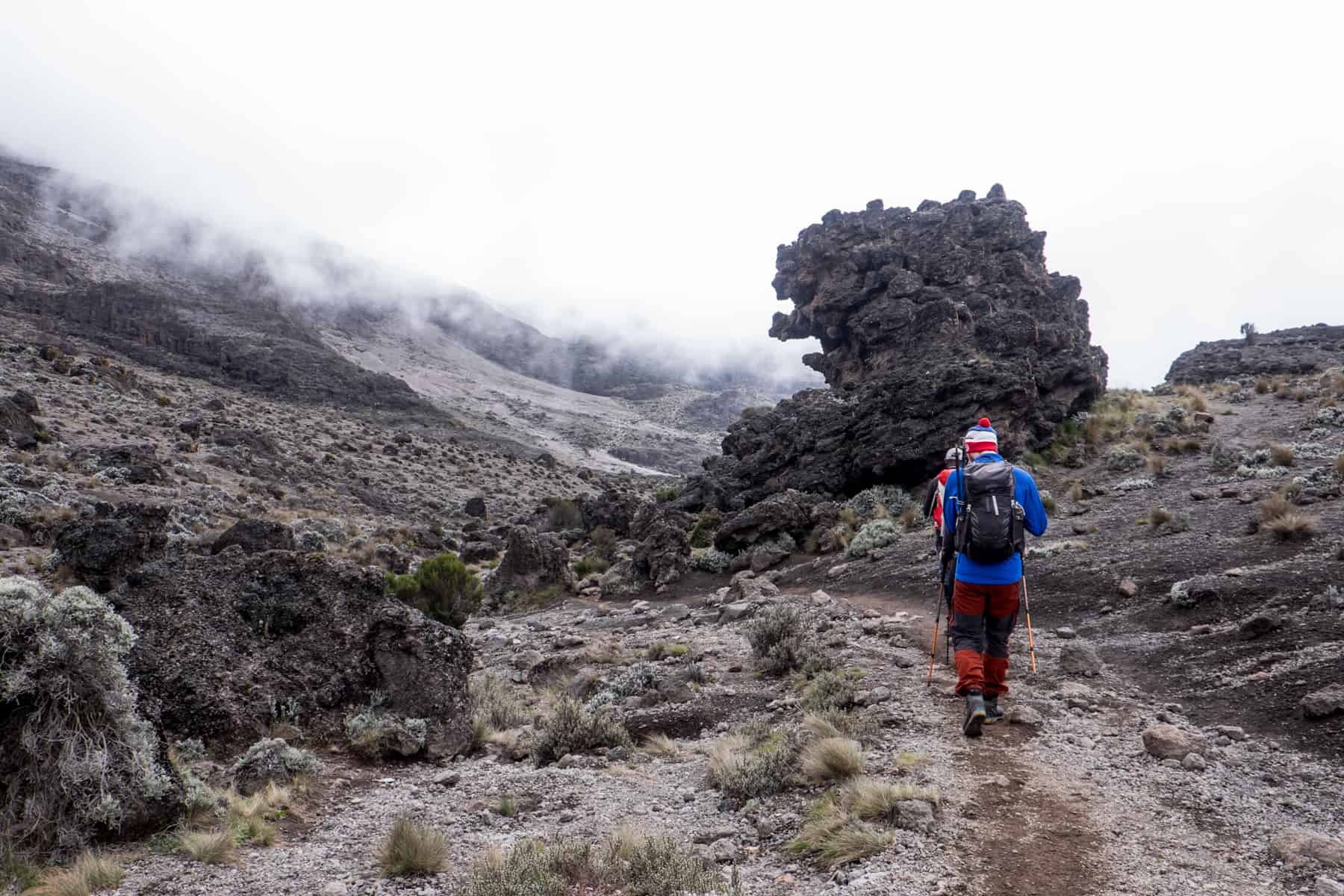
Preparing and Training for Kilimanjaro
How Fit Do You Have to Be to Climb Kilimanjaro?
As nerves begin to brew at camp, and dinner conversation turns more and more to the Summit, the G Fighters put on a show of song and dance to lift our spirits, louder and prouder than anyone else on the site.
How Much Training Do You Need for Kilimanjaro?
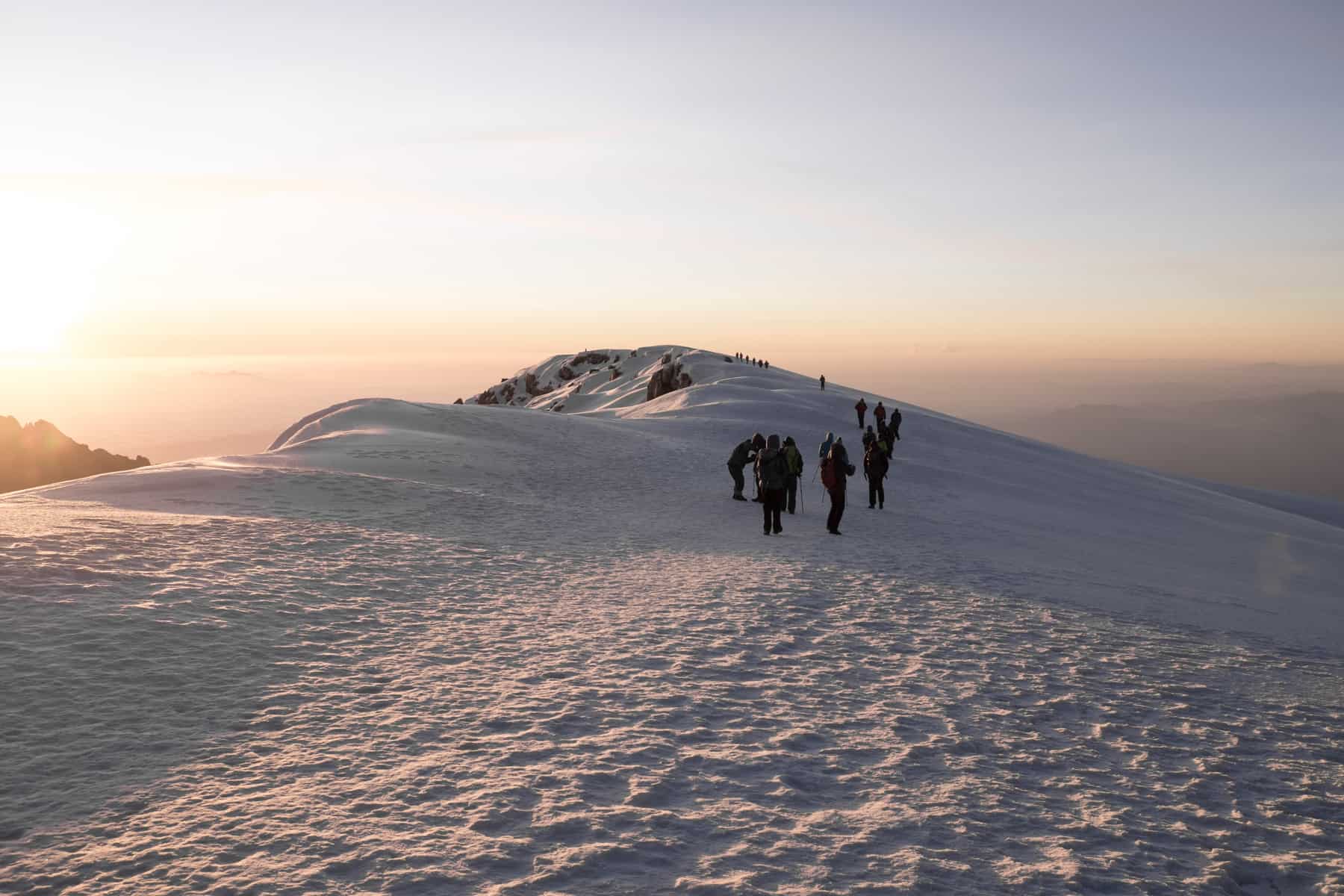
Be sure to have copies of your passport, vaccination certificates, travel insurance policy, trip vouchers and hotels booking and copies of your passport.
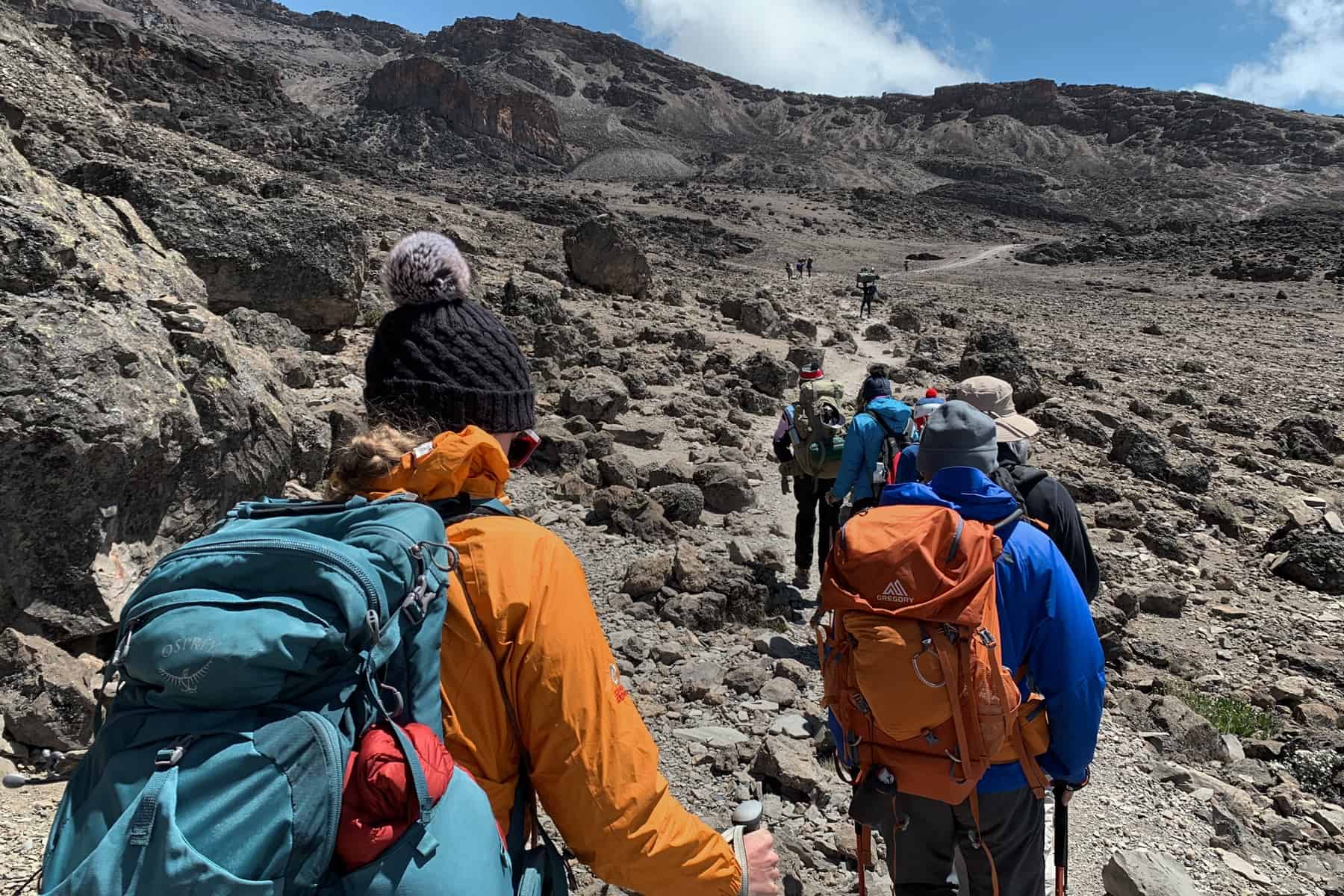
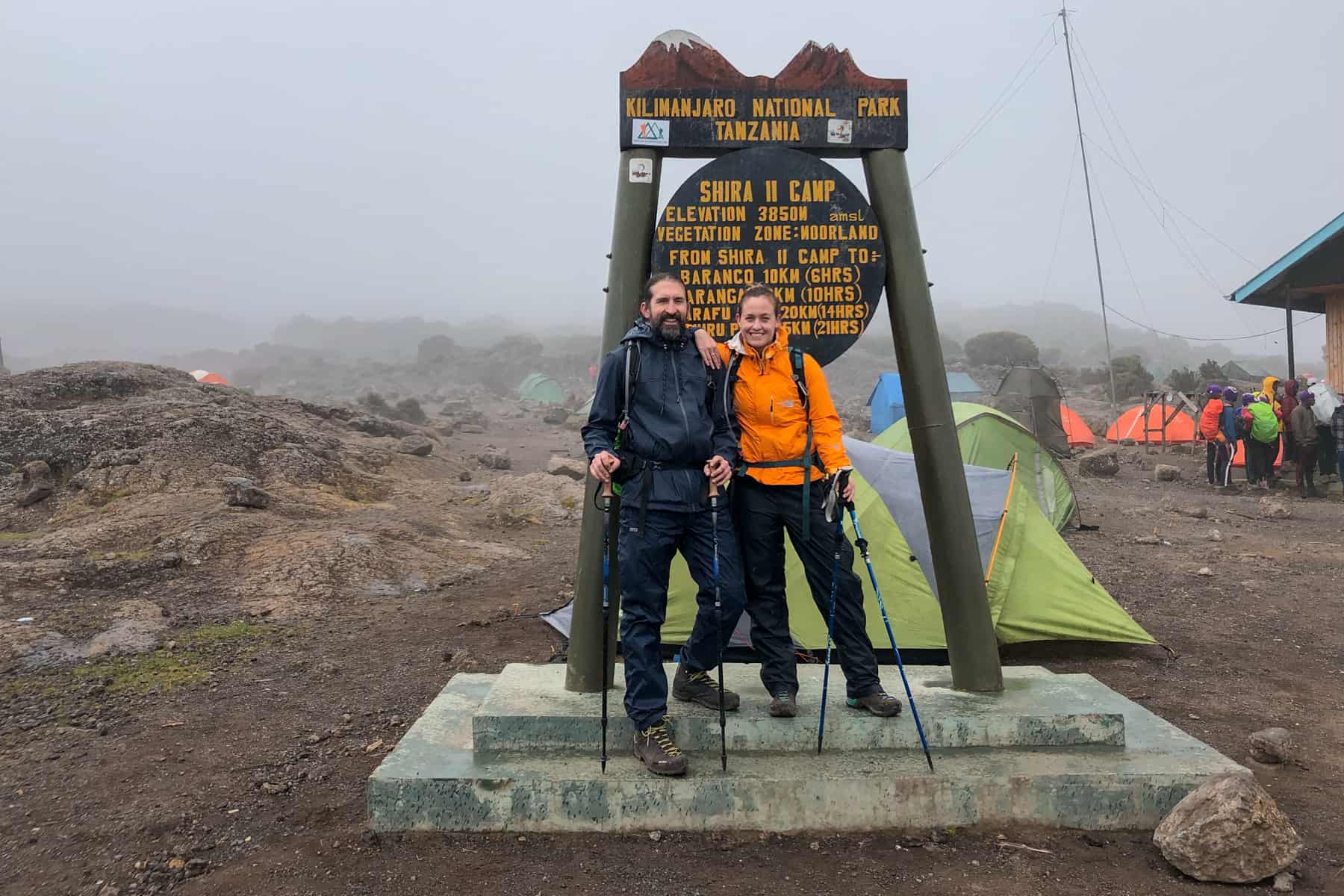
Every day the chant was: “One team, one dream! Non-stop, to the top!”
Give yourself at least two months to organise your vaccinations. You will need Hepatitis A and B, rabies, diphtheria, tetanus, polio, typhoid, and a yellow fever vaccination before travelling to Tanzania. These are usually administered over a few weeks if you haven’t had them before or need boosters.
Is there an Internet connection on Kilimanjaro?
Another late afternoon acclimatisation walk rounds off the day, preparing you for the pending summit climb in little over 24 hours.
Our trip ended with a visit to an authentic Maasai village to see the social enterprise Clean Cookstove Project in action. Some 120 women have trained to install more than 4,000 stoves in more than 60 Maasai villages across the Serengeti, replacing traditional open-fire and fuel-burning stoves whose smoke pollution is the fourth biggest health risk in the world.
Vaccinations and Malaria Prevention
Camping, Hygiene, Toilets and Water
Lunches and dinner were a course of vegetable soup, and then the main dish made up of rice or pasta, vegetables and potatoes. Lunch after the famous Barranco wall was chicken and chips, and the group was delighted. You don’t realise how good a real hearty, comfort meal is until you have it after an arduous day.
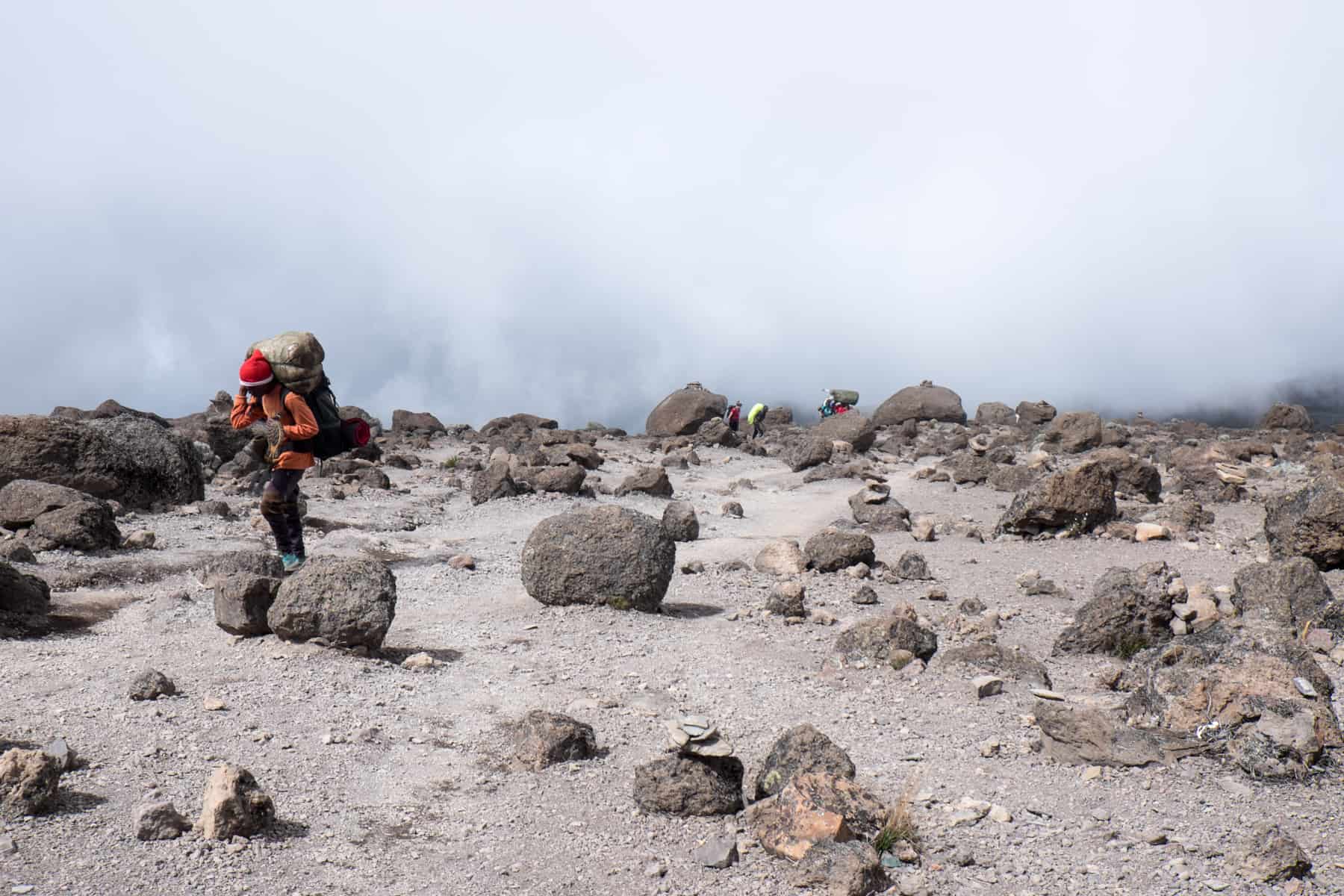
The first day begins by driving through the villages and lowlands of the Cultivation Zone to the to Londorosi Gate at 2250m where each person in the group must sign in, as do the guides and porters as part of the legal registering of entry to Kilimanjaro National Park.
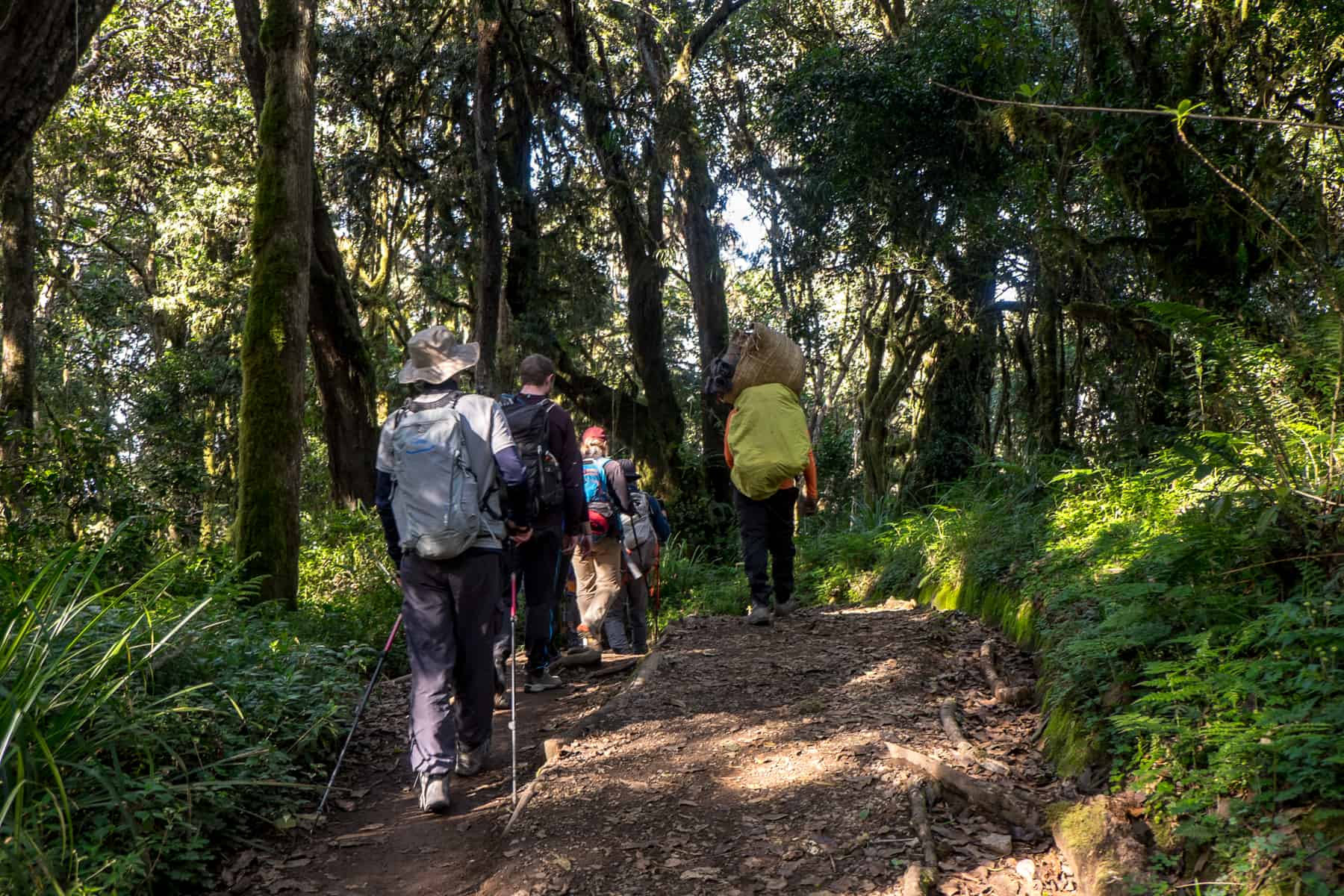
Tanzania Visa
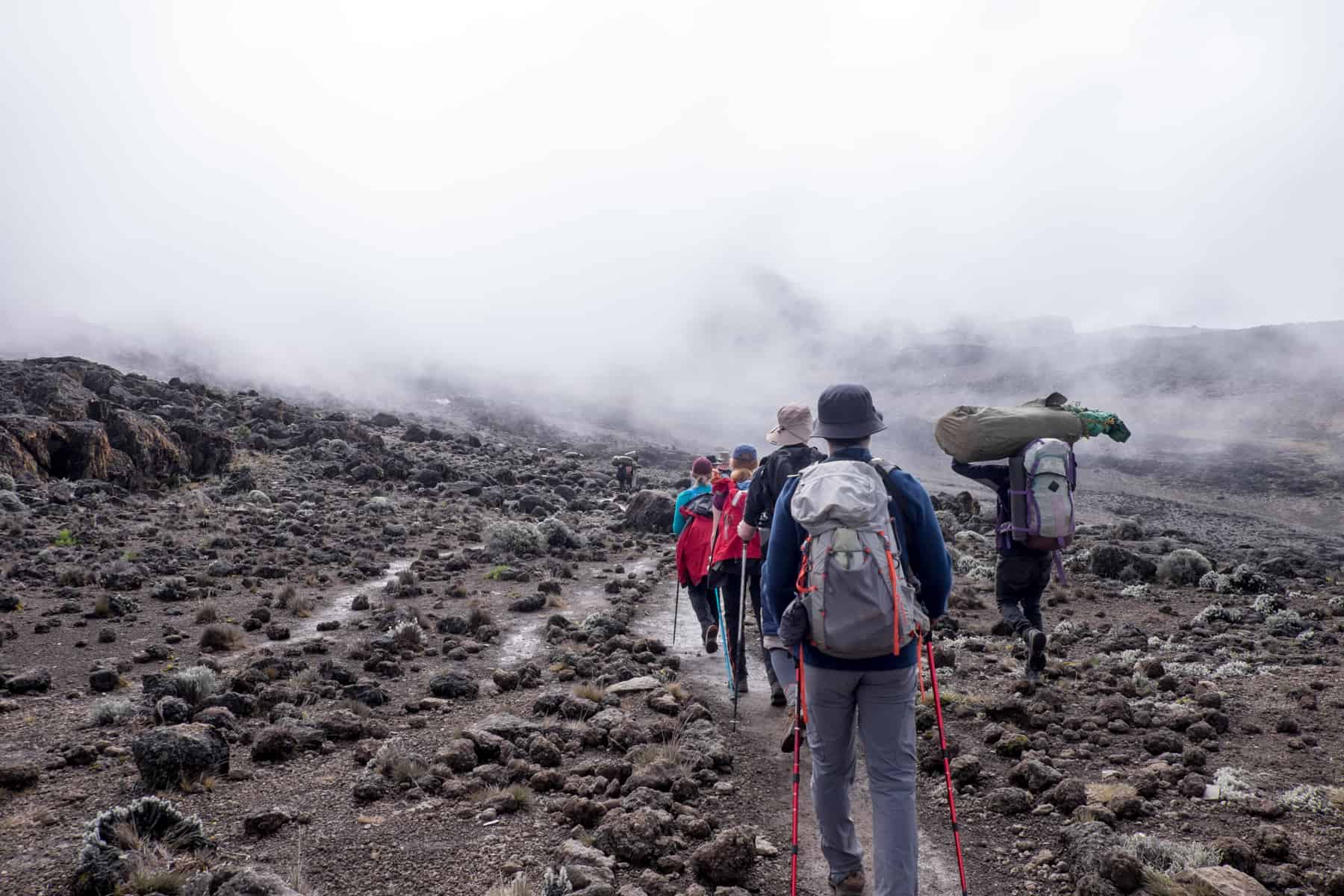
The porters are an invaluable part of your trek experience. By the time you are ready to leave camp, they’ve packed it down. By the time you’ve reached the next camp, hours behind them, it is set up and waiting for you. Some would even walk back on the track to come and meet us, take our daypack from us if we were tired, and show us to our tents.
Get Travel Insurance That Includes Trekking
Small crowds gather round the sign, with often only minutes to capture the moment and revel in the bewilderment of the African dawn on a 360-degree panorama, before needing to head down.
You’ll see plenty of porters without decent gear, or pushed physically beyond a healthy means. Many trekkers end up donating some of their equipment and clothing to the porters after the trip. Make sure your tourism dollars are contributing to a decent wage and fair treatment. These guys are absolute warriors.
There’s no denying trekking Kilimanjaro carries with it a certain streak of dangerous territory since it is an extreme altitude mountain trek. And while not technical, it’s sheer height levels it on the side of heavy precaution.
- Treks up to the height of at least 6,000m.
- Mountain Rescue by Helicopter/helicopter evacuation.
This is how broken you may end up looking after Summit night and day
How to Get to Kilimanjaro
Travel to and from Moshi and Kilimanjaro Airport at the start and end of the trip, alongside all food and drink costs outside of the trek days, are not included.
Another way of detecting when altitude is affecting you is with appetite. Your appetite will proportionately decline as altitude increases. However, it’s essential to try to eat what you can, even if the only thing you can stomach is chocolate for a little energy boost.
As one of their Wanderers ambassadors, I also travel with them to highlight responsible travel practices and where tourism money and method is for social good.
Kilimanjaro Trekking Tips
How Do You Prevent Altitude Sickness on Kilimanjaro?

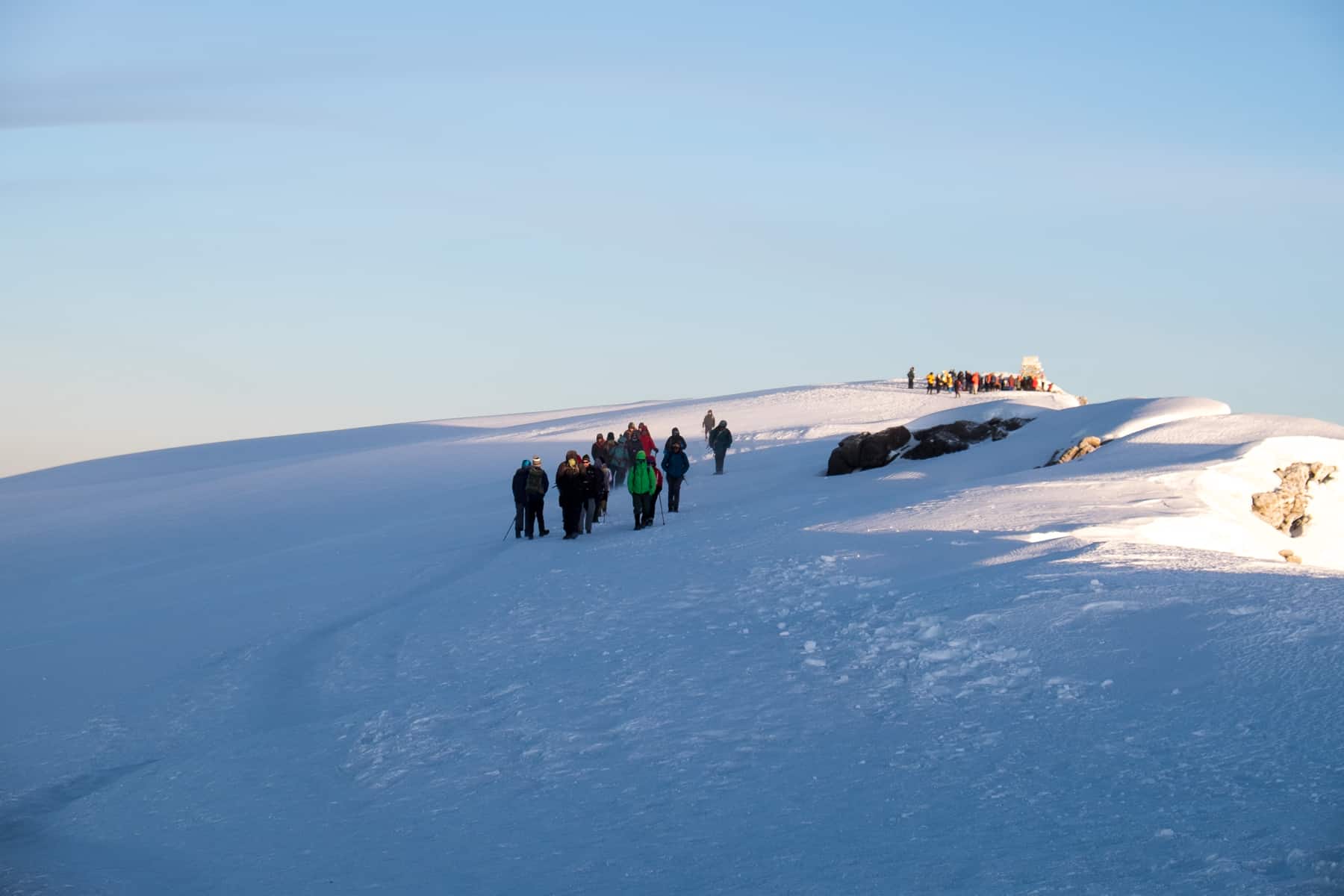
Packing all the right gear for Kilimanjaro for essential
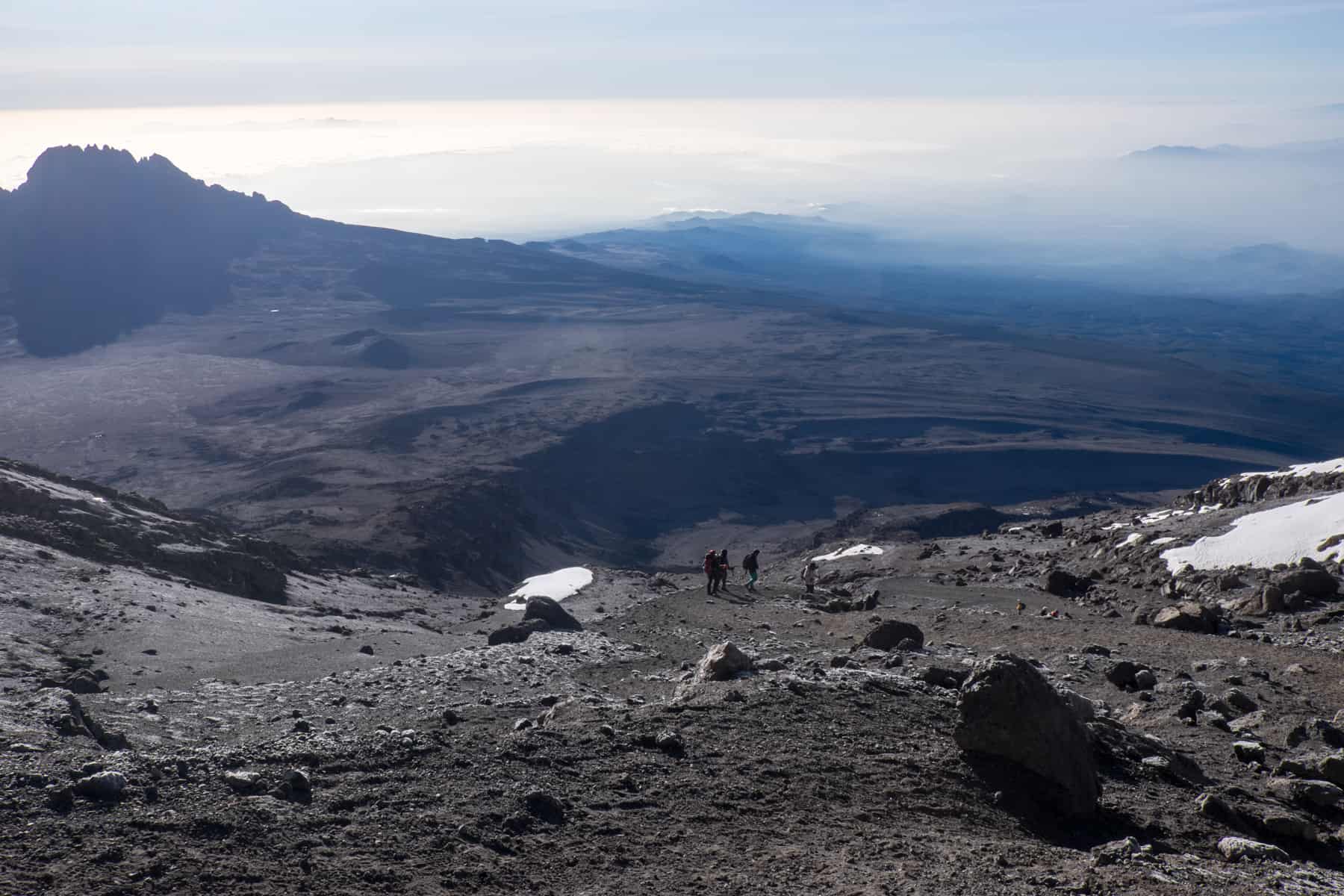
The Mweka Route is the exit path you take to leave Kilimanjaro National Park on the Macheme and Lemosho trek routes after summiting Uhuru Peak. We slept at Mweka Camp after the long summit day and trekked a short path down to Mweka gate the following morning.
Get used to the fact that you will not be showering until you get back to the hotel for the most glorious cleanse of your life. You get given a bowl of hot water in the morning and evening for washing, and it’s worth bringing baby wipes and a microfibre towel to feel as clean as possible.
I booked on the 12-day G Adventures Lemosho tour, which includes the 10-day trek, the hotel in Moshi either side. This cost includes tents, food, guides and porters.
Lunch at the Lava Tower’s mighty 4,600m is also a spot for acclimatisation – a marker of accomplishment that you’ve made it this far, a little beaten but still determined.
The wettest months are:
Camping can get tiresome and rough during your time on Kilimanjaro, but it is also the main thing you need to get used to quickly. You camp with two-person tents, which are assembled and dissembled by the porters. Each tent has a number so that you use the same tent and padded sleeping mats for the entire duration of the trek. Overall, this ensures a dedicated level of hygiene and having peace of mind.
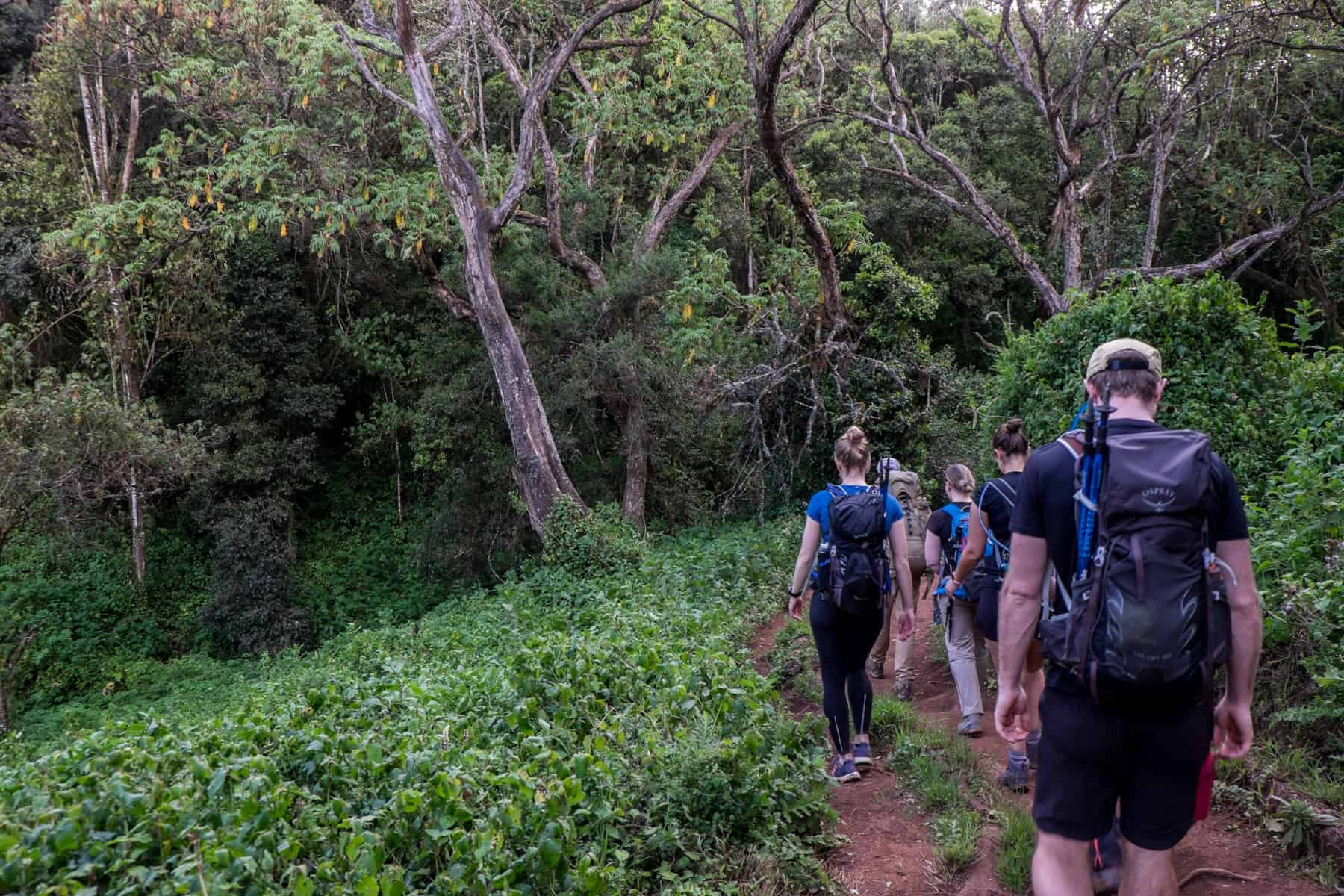
Reaching the Summit
Garlic Tablets
Practice treks
Back at the hotel, the shower you take is the most glorious, indulgent shower you’ve ever had – a one-metre-squared spa. You scrub up ready for the climbing ceremony where you get your certificates, presented to you by your guides and the ‘Moshi Mamas’ of the Moshi Women’s Cooperative – a G supported community project which provides business education to local women via the funds raised through tourism.
Starting easy, this is a short trekking day to get used to a pace and rhythm, passing through lightly humid Montana Forest, whose pathways cut through the thick, emerald green vegetation of the Rainforest Zone, home to the black and white Colobus monkeys. Arriving at Mti Mkubwa Campsite, it time to get used to camp life ahead.

It’s a personal choice whether you continue to take antimalarial pills beyond the first day of trekking and while on the mountain. We chose to stop and then restart them on the last day when we were coming down.
Testing your gear
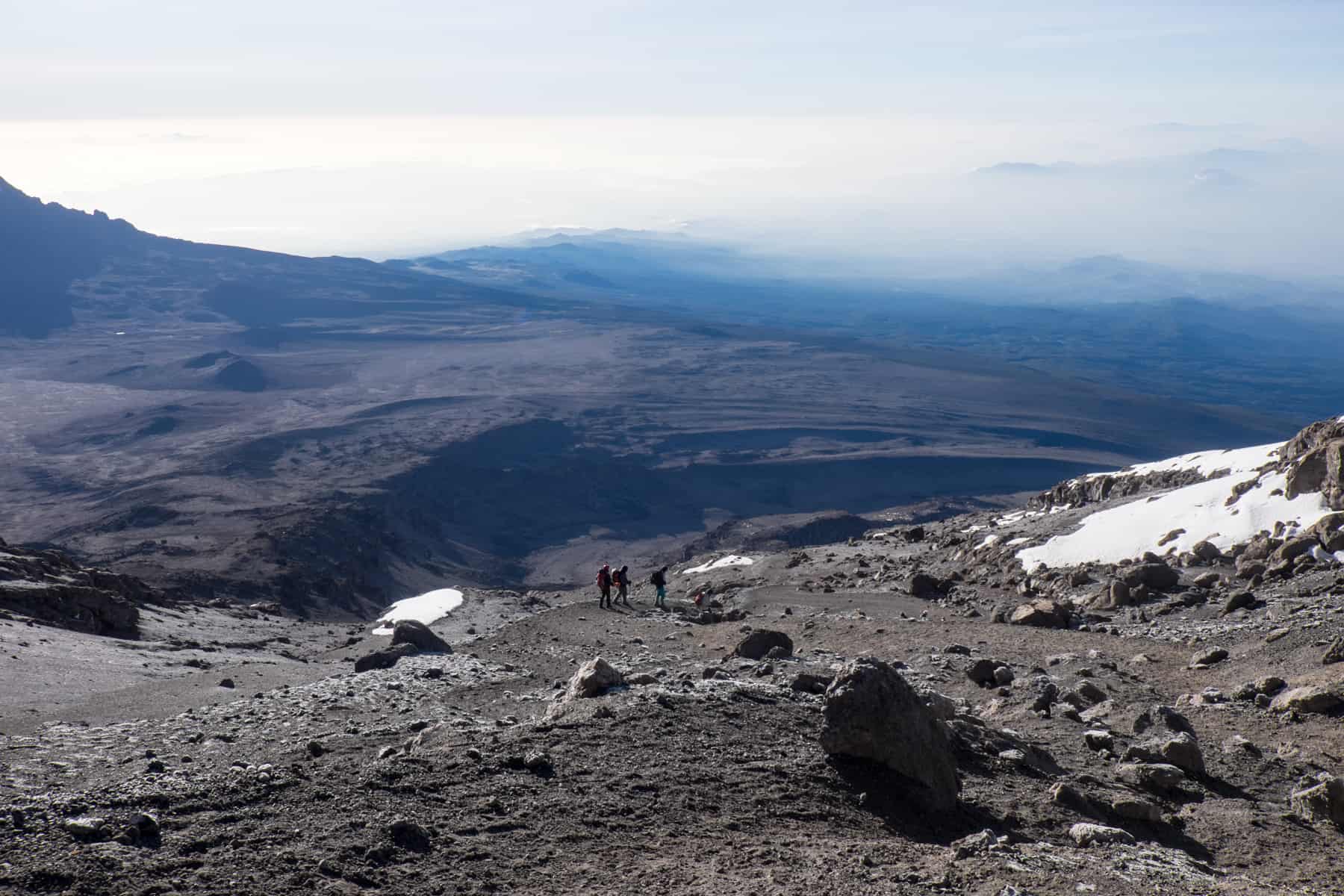
Uhuru – Mweka Camp
All four G Adventures Kilimanjaro trek tours score 100%. Therefore, alongside a high success rate, you also know exactly how far your money is going. You become part of the collective commitment to supporting the locals in Tanzania when you undertake this trek of a lifetime.
Porters always carry water, providing daily drinking water for the trek team, topping up at any water sources we pass and using water purification tablets that kill microorganisms in the water. Water is always readily available during meal times and in the morning for the essential refill before the day’s trek.
One smaller 20-30L daypack – which is the bag you will carry with you daily. You’ll need to carry at least 2 litres of water, extra layers and waterproof gear, snacks and in my case, my camera. Ideally, you don’t want to overload this bag, keeping contents to a minimum.
Prepare Mentally for Mount Kilimanjaro
There’s a lot of scaremongering about the Great Barranco Wall that you must climb and clamber up to get further into the Alpine Desert of Kilimanjaro and the expanse of the Karanga Valley.
It is paramount to choose a company with the right ethical approach to the work practices, conditions and wellbeing of its guides and porters. Are they paid well? Are they able to climb with the proper footwear and clothing? Are there enough porters for the size of the group, or are they being made to carry more than they should?
Every morning they brought us a hot drink and “washy washy” hot water. Breakfast, lunch and dinner were hearty, well made, tasty and focused on maximum energy supply.
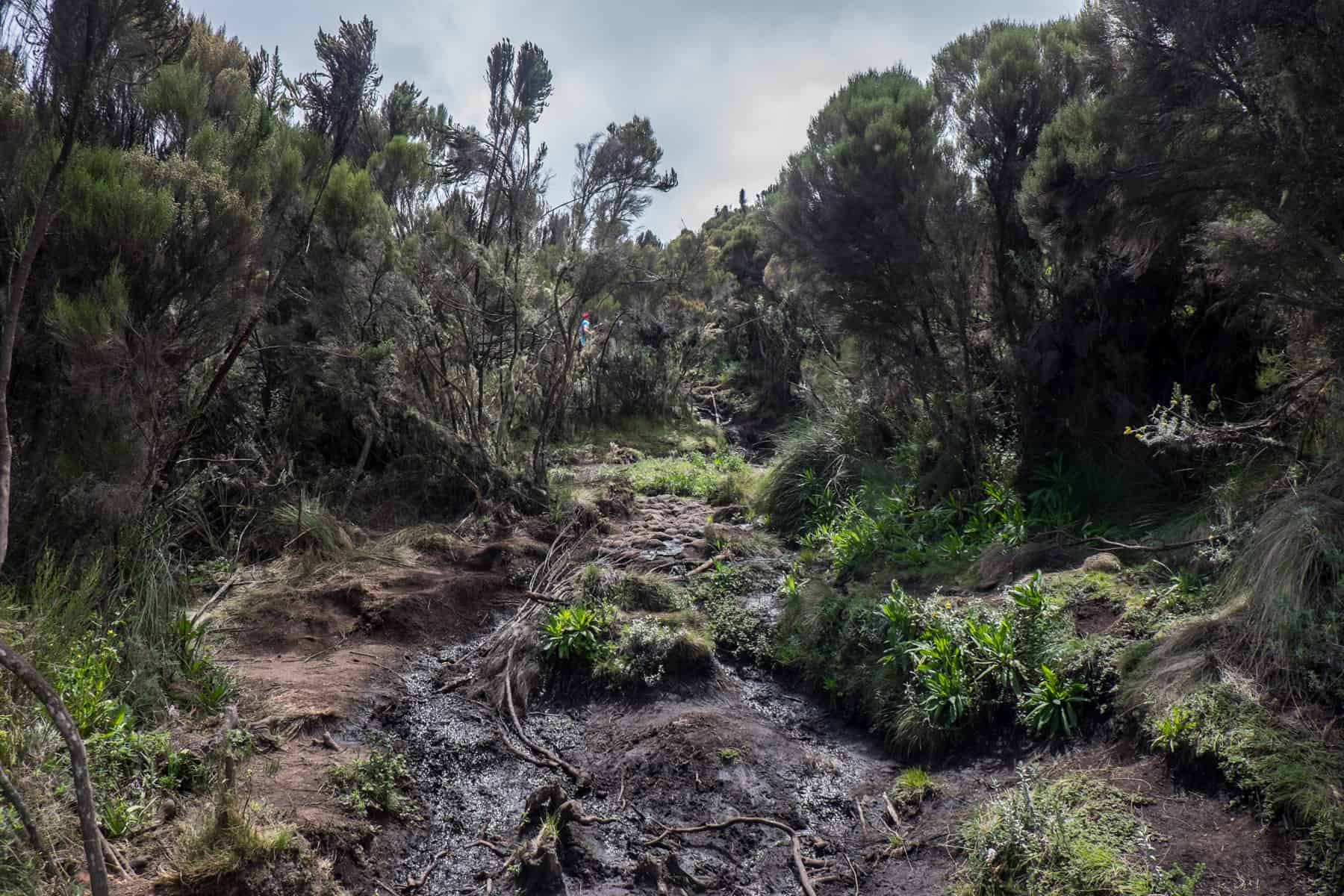
Remove yourself from negativity and annoyance. Walk away from people who are negative or do the simple thing of standing in a different part of the trek line from them.
We paid to have two portable toilets for our group, which saved having to rely on the gross long-drops found at the camps – which can be quite a walk from your group camping spot. Paying extra for the toilet is worth it for the overall morale of the group and general comfort.
Kilimanjaro isn’t an easy climb, and it never will be. Not everything achievable is easy, and it’s OK to say Kilimanjaro is quite the feat to endure and overcome. That is typically a strong basis for trekking – that the pain brings reward. And with Kilimanjaro, you are certainly rewarded with one of the most scenic and highest mountain summits in the world.
Nights are chilly and sometimes in the low minus figures, even if the day is relatively mild. The Uhuru Point Summit can get as bitter as -20 degrees. We experienced -10 degree with -10 degree wind chill on the very top.
It’s about guides who are with you every step of the way and don’t trek ahead and leave you behind, which I saw many times in other groups we passed.
Everyone reacts differently or unexpectedly, but there are some ways to help prevent altitude sickness on Kilimanjaro.
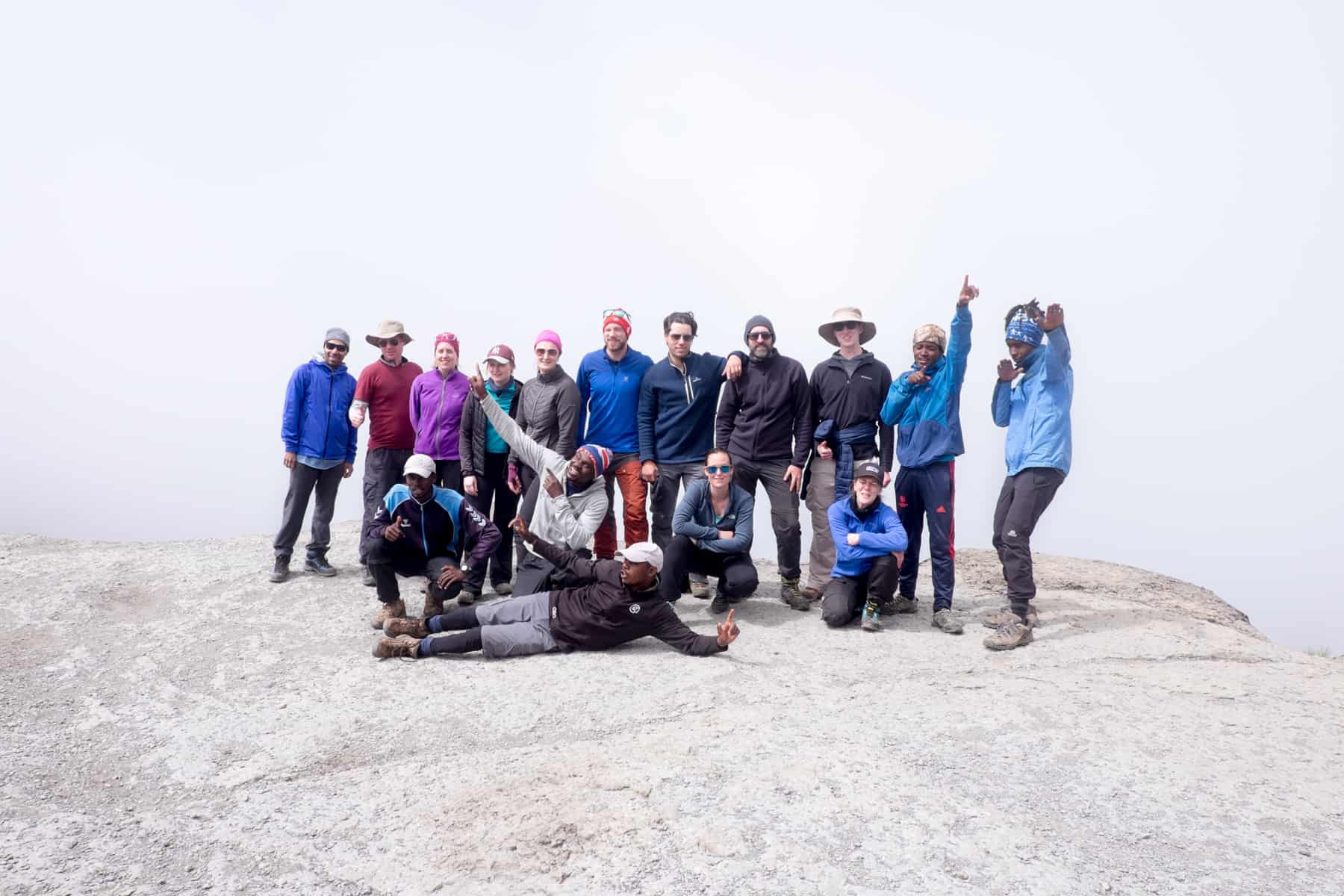
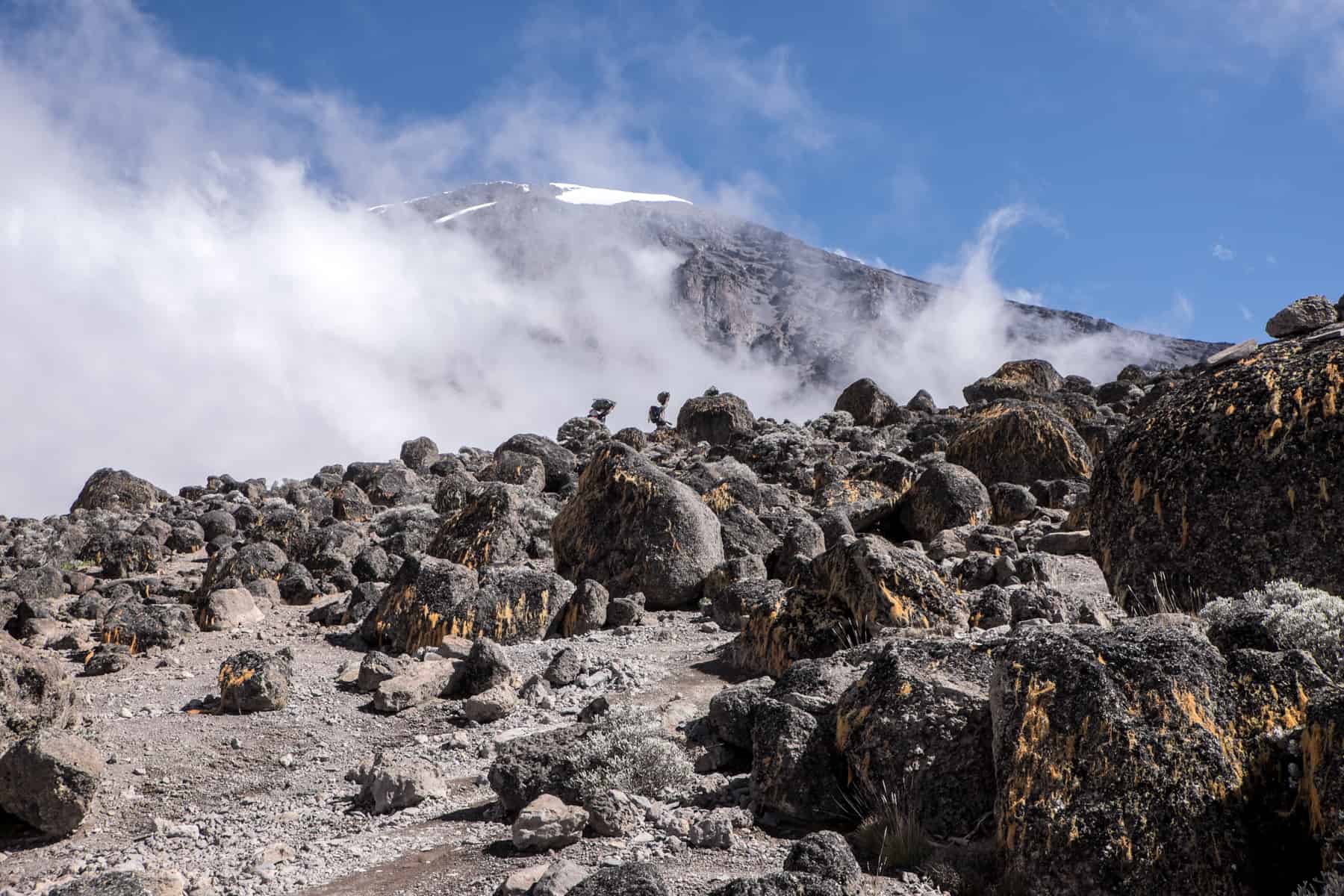
What Else to Expect When Climbing Kilimanjaro
While ‘how many people die on Kilimanjaro?’ is not the thing to Google before you go, it does pay to be aware of the low ratio of extreme cases concerning the overall amount of people who trek. Over 30,000 people trek Kilimanjaro every year. Out of that, park reports state around 1,000 evacuations from the mountain and an average of ten deaths, attributed to Acute Mountain Sickness (AMS), known more commonly as Altitude Sickness.
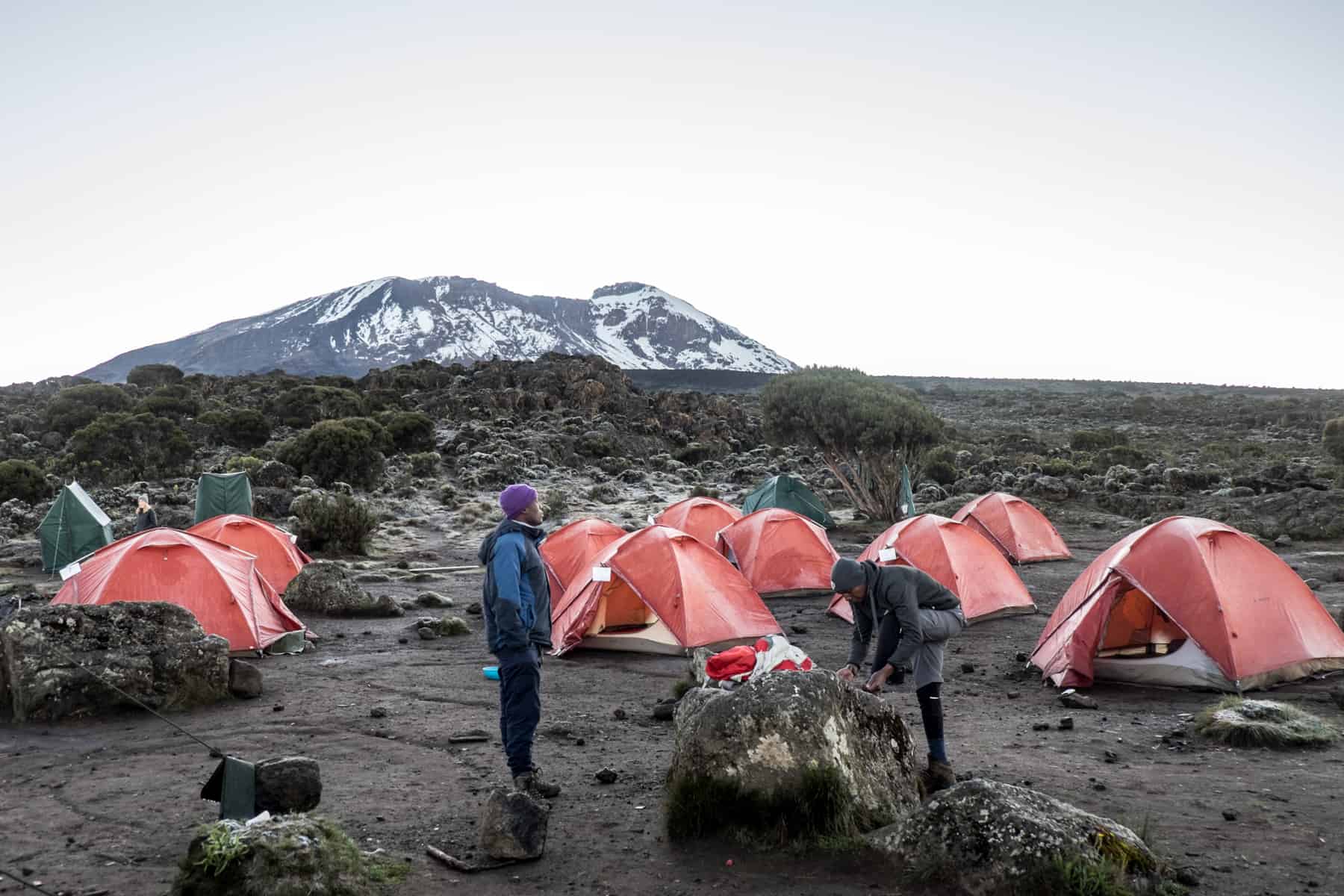


It’s one of the most lively and enjoyable parts of the trek – a morning of rock climbing at the hands of guides who are experts in its orientation who will push-pull and aid you with your Spiderman experience. Don’t believe the clickbait videos – it’s unnecessary negativity that will hinder you, rather than help you.
Maybe the pitch-blackness is deliberate, to not dramatically see the trail of the craziest incline – the wretched, most agonising climb of your life. Maybe the darkness is to cover those beset by altitude sickness – wobbling, vomiting, crying and in delirium.
The Lemosho trek will set you back closer to €3000 as the tour is much longer, and therefore more staff need to be on the ground, and more essentials such as food are required.
It’s 11 pm, and we are one of the first groups to depart Base Camp to reach the Kilimanjaro Summit in the Arctic Zone as the dawn rises to mark a new day. We’ll reach Uhuru Peak “tomorrow”, but first we must climb the 1,500m bouldering Kibo, zigzagging slowly to its icy rim and the first climbing marker of Stella Point at 5,756m.
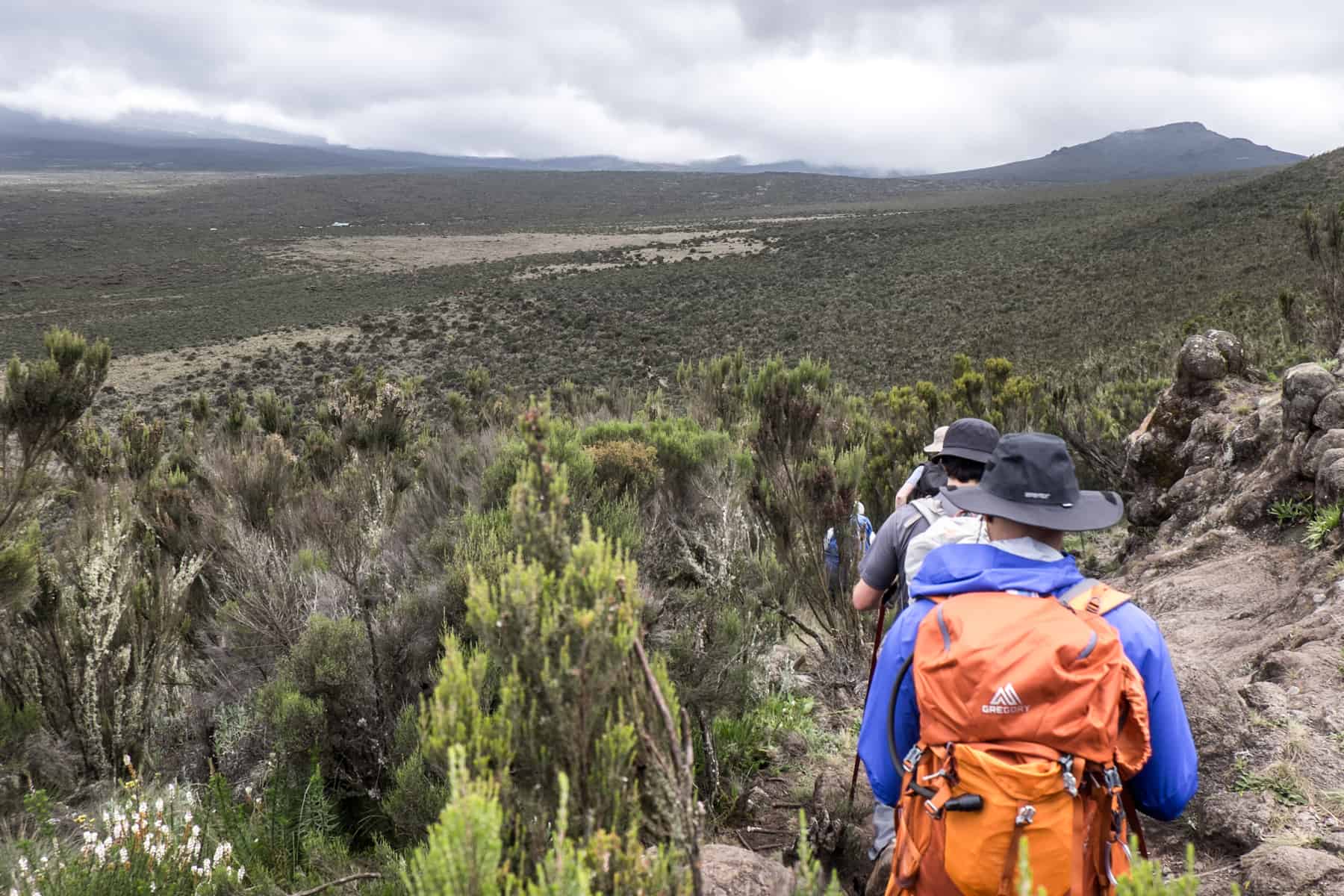
Some people join Kilimanjaro groups as first-time hikers but succeed because they are in good shape and have done the preparation. A lot of success depends on your physical condition, how your body reacts to altitude (often unpredictable) and not based on how many previous treks you have done.
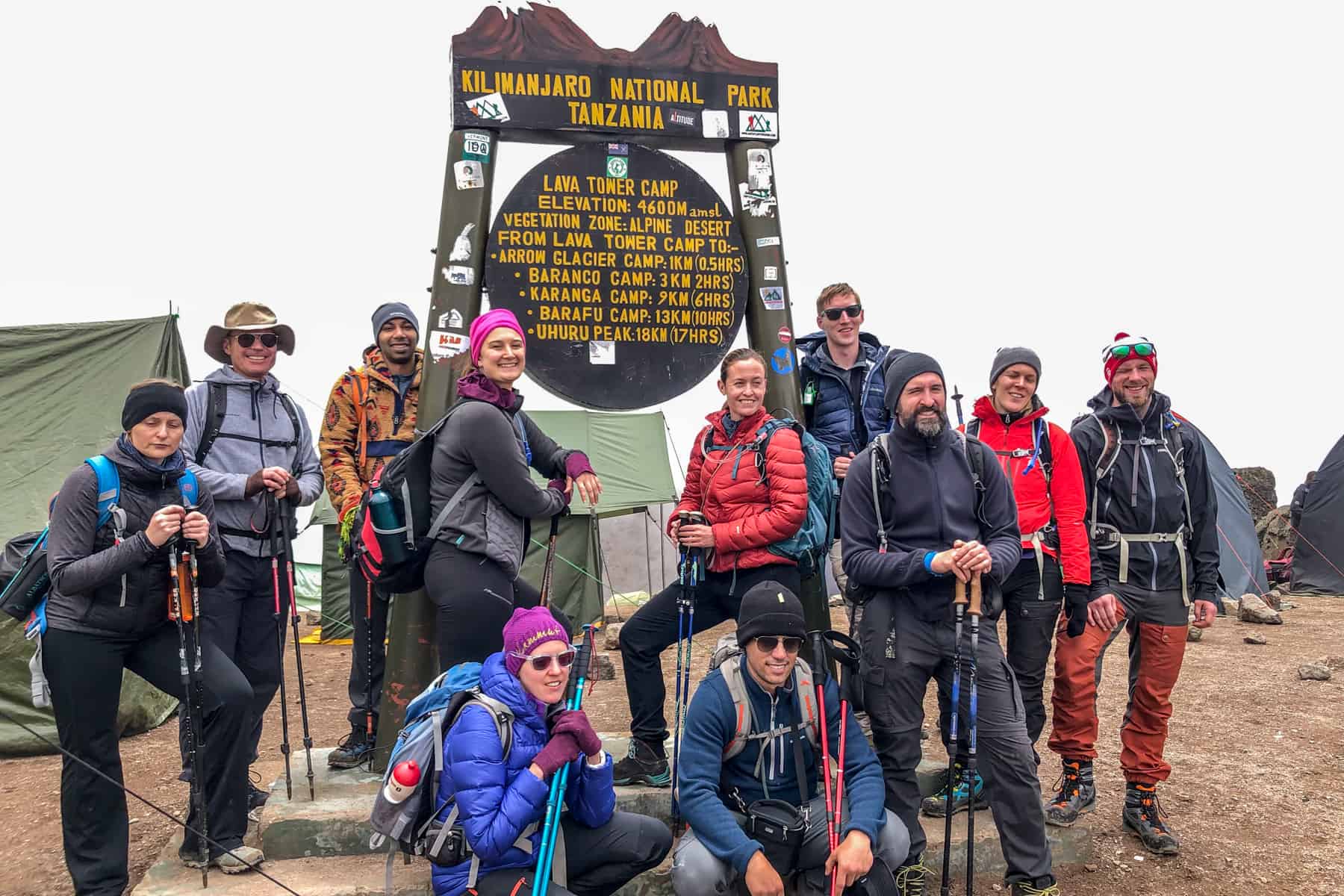
The two-hour descent begins with a staircase of lofty rocks, which widens to the rock-strewn, Great Barranco Valley, dotted with quirky, thick-trunked trees with foliage nests and a lowland shrouded in mist. At Barranco Camp, you sleep elevated on a perch, with the valley to one side, and the mighty cliff face of the Barranco Wall on the other.
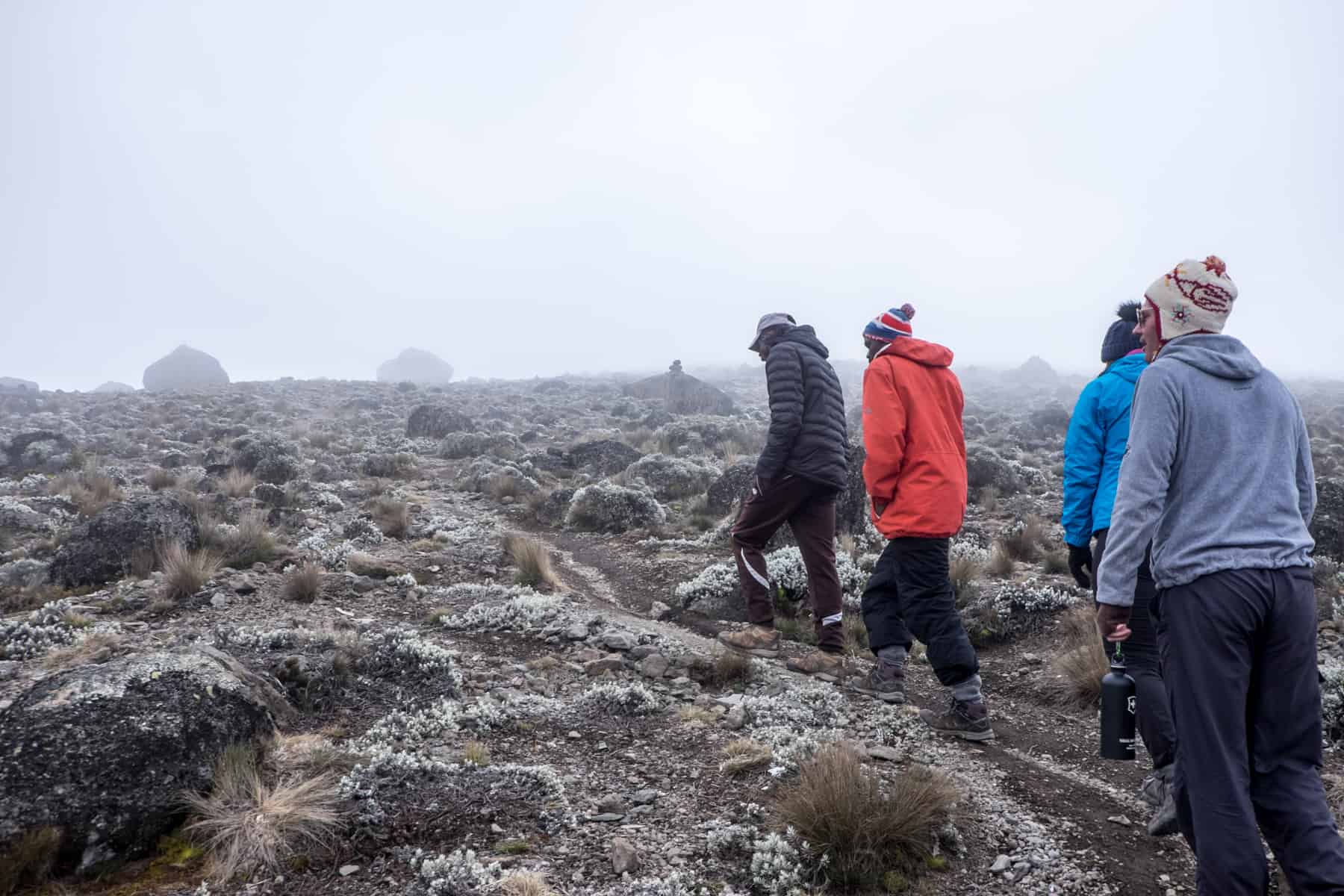
You have another 3.5 hours of descent to Mweka Camp at 3,100m through what I call the white stone forest. A seemingly never-ending conveyor belt of uneven white rocks on a hilltop with a distant camp view that doesn’t feel like it’s inching any closer.
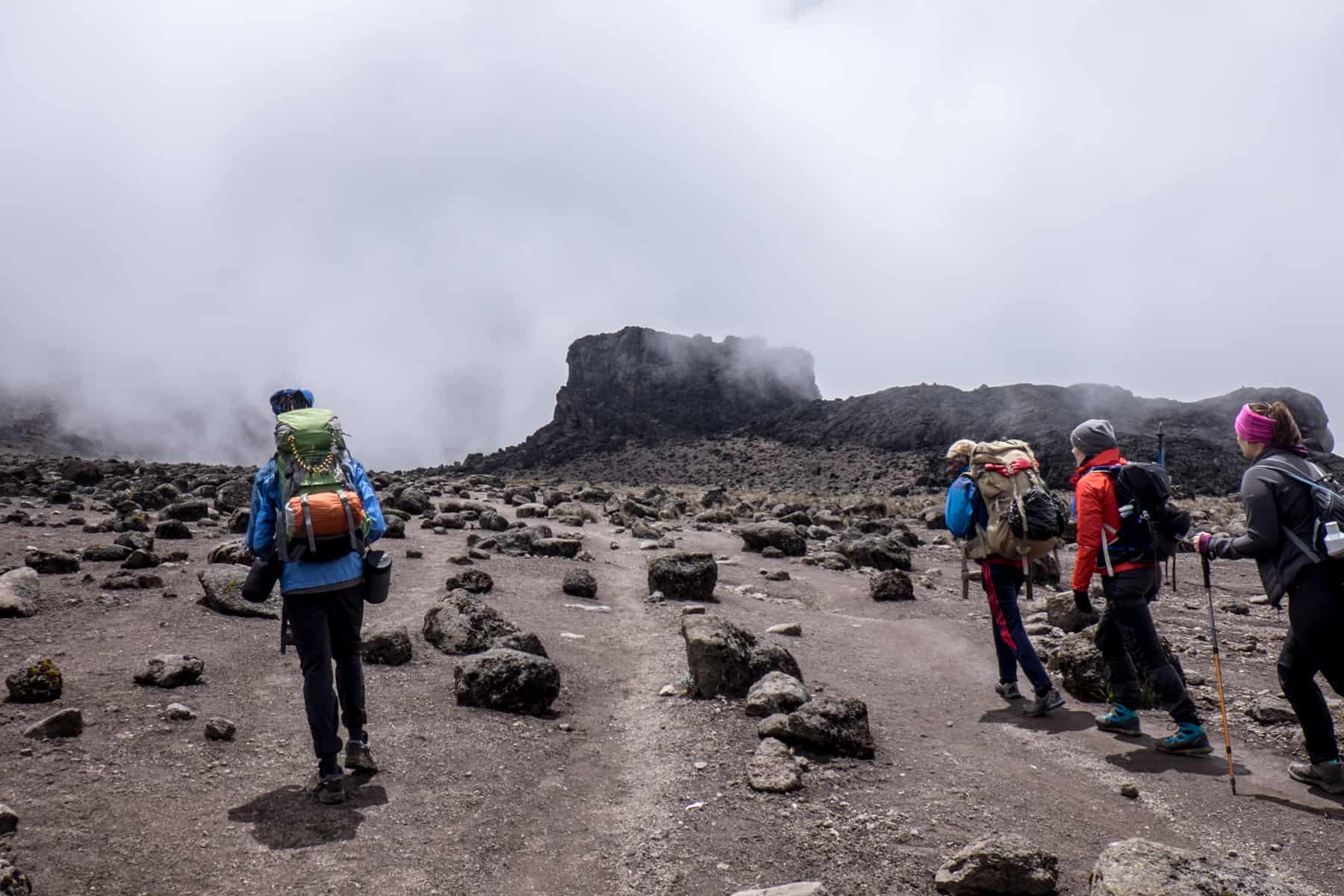
What to Pack for Kilimanjaro
Before continuing to Moshi, we had lunch at Mweka village. You might recognise the worn and weary faces from that very first day, and the hurried hellos along the trails. The atmosphere is a celebration of accomplishment and survival, and a release of the excess adrenalin.
Disclaimer: This post contains affiliate links to handpicked partners, including tours, gear and booking sites. If you click through or buy something via one of them, I may receive a small commission. This is at no extra cost to you and allows this site to keep running.
I would choose between Macheme, as it is the most set and practised route, and Lemosho because of the extra time for acclimatisation, which is essential for summit success.
I choose the Lemosho Route for three reasons. It is considered one of the most beautiful trails with some of the best mountain vistas en route. There are fewer people, with Lemosho following a similar pathway to the Shira route and taking a slight detour to the Machame Route early on. Notably, the extra trekking time gives a much higher success rate of reaching the summit due to better altitude acclimatisation.
Know that having mixed emotions is ok. You’ll move from feeling fine and energised, to sad and moody, to bored and unhopeful, all in one day. You just have to use a lot of mental energy pulling yourself out of it.
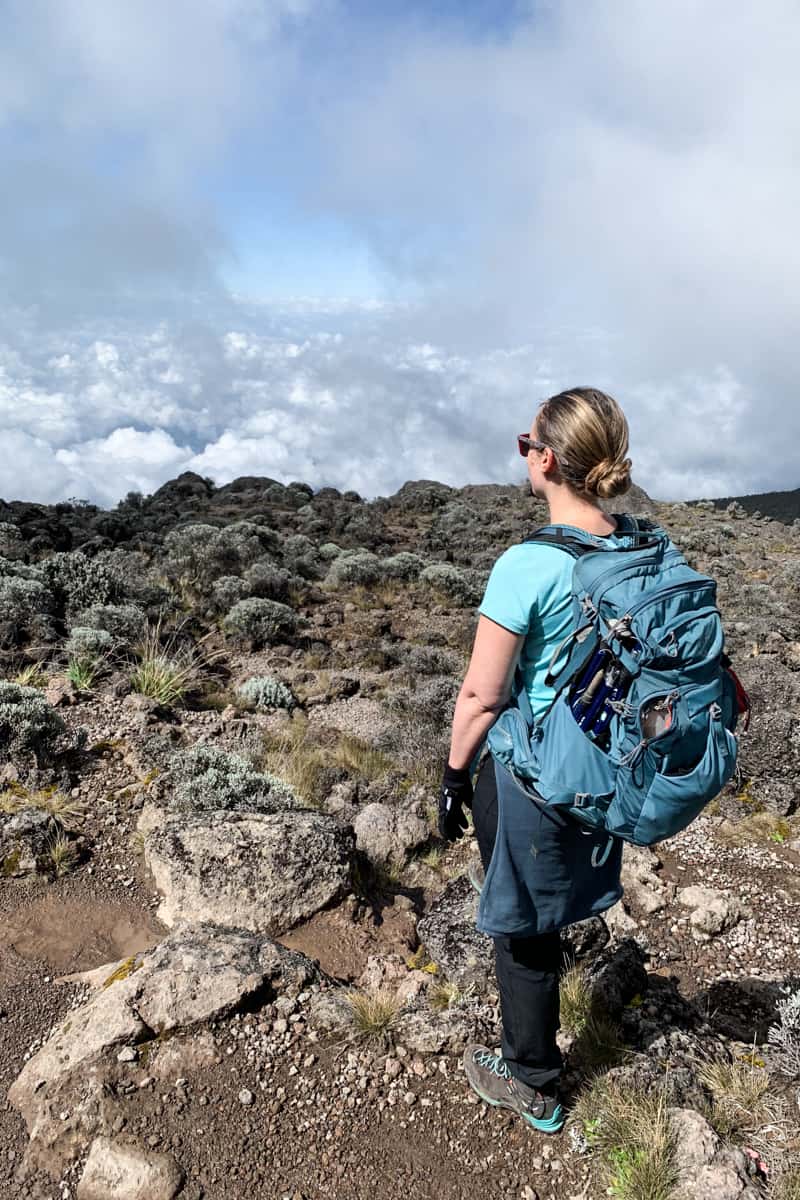

Shoes and Bags
- 1 x Waterproof Hiking Boots with winter/snow grip. We both purchased Salewa mountain trek boots from the MTN Trainer Mid GTX range – lightweight, with a softer ankle and heel system for comfort, and a Vibram sole for an excellent grip.
- 1 x Camp Shoes/sneakers. For quick change and comfort. I always travel with my Vivobarefoot Primus Lite II sports shoes, which are ultra-lightweight and made from plant-based fibres.
- 30-35L Day Bag w/Camel hydration pack. We used the Osprey Mira 32 (female fit) and Osprey Mantra 34 (male fit) both of which include a 2.5L reservoir, which I cannot recommend enough for long treks and keeping hydrated easily while on the move. These packs also have a rain cover, contoured fit and cooling back system for maximum comfort and with roomy, multi-compartment sections to organise your gear.
- 4 season Sleeping Bag. I invested in a Hyke & Byke Eolus 800 Ultralight Goose Down Sleeping Bag (-10 & -15 Degree). It’s a snug fit ‘Mummy Bag’, squashy and comfortably warm and easy to pack and unpack.
- Silk sleeping bag liner, or a thermal/fleece sleeping bag liner if you want more comfort and an extra layer of warmth.
- Waterproof Dry Bag/Dry Sack. Efficient for packing and with a waterproof roll-top closure.
Is the equipment in good shape? Some treks with lower prices don’t have the best equipment, such as tents and tables, or a decent standard of food.
Clothing
- A down jacket, a windproof and waterproof jacket and a fleece for layering and protection against the elements.
- A pair of sports leggings for the cooler days (first and last day)
- One pair of comfortable trekking pants since you will be living in these, mostly.
- Invest in some fleece-lined trek pants for Summit night for extra warmth and comfort
- A pair of quick and easy pull-on waterproof pants for those spontaneous rain showers.
- Two thermal tops and a pair of thermal bottoms/long-johns. These are also ideal to use as sleepwear.
- A sports bra – more comfortable than a standard bra.
- Three lightweight wicking t-shirts. Just make sure they are not cotton, which retains moisture and doesn’t dry quickly.
- Two long-sleeve mid-layers / zip-up jackets for extra warmth layering.
- A warm hat, scarf and gloves. I took two pairs of gloves – one lighter pair and thicker ski gloves for Summit night.
- Pair of leg gaiters (which I rented at the hotel)
- Socks and underwear for each day. I packed 4 x Liner socks and 4 x Quick-dry hiking socks (wool or synthetic). I also packed some cosy and ultra-warm Heatwarmer socks for the night.
Accessories
- Metal/aluminium bottle for the night to hold hot water.
- A strong LED headtorch for camp at nighttime and a smoother Summit climb.
- Skin protection, such as sunglasses, sunscreen and heavy-duty lip balm.
- Walking poles, which are invaluable for the unstable, rocky climbs.
- Quickdry microfibre towel, easy to dry or hang on your daypack.
- Earplugs, because camp can get noisy, especially in the early mornings.
- Cleansing essentials, such as hand sanitizer, toilet paper and wet wipes and toiletries (ideally biodegradable).
- All prescription drugs and painkillers and a mini first aid kit.
- Snacks, electrolytes and comfort foods, including protein bars, nuts and chocolate.
Gear
- Camera and relevant accessories. Lenses optional according to size and extra weight you want to carry.
- Spare camera batteries. I took three extra.
- Smartphone and extra chargers. We took two Anker 20000mAh High Capacity Portable chargers.
- Universal Adaptor for pre-charging at the hotel.
Try to eat, even if your appetite wains
Money
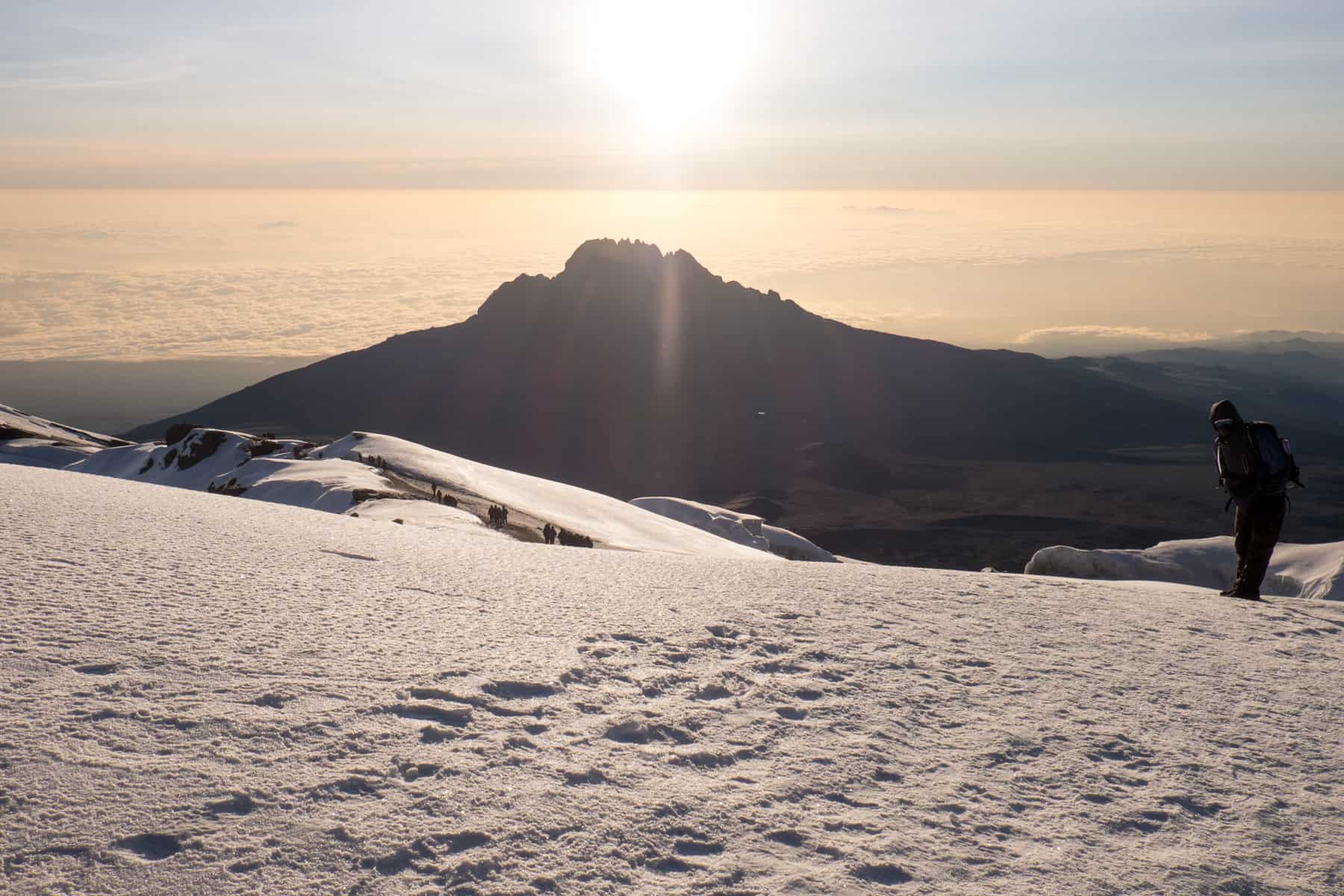
To climb Kilimanjaro, you have to be accompanied by a licensed guide, as well as legally follow one of the set routes on the mountain.
Porters and Tipping
One larger pack – with a limit of 15kg that will be carried by the porters. A duffle bag is preferred, although we were able to use our backpacks as they fit the 30cm (height) x30cm (width) x 60cm (length) sizing that’s put into a carry sack.
Prints of Documents
The Umbwe Route is only for experienced climbers, and for that reason, you will rarely find it listed as an option with a lot of responsible tour operators. This route is the most technical and challenging of all and has a lower success rate because the rigorous steep climbs provide an inadequate means to acclimatise.
Overall, Is the Kilimanjaro Climb Worth It?

Therefore, you must never compromise on the above things by being blinded by a lower price.
What to Do After Climbing Kilimanjaro? Beach and Safari
Zanzibar Beach Time
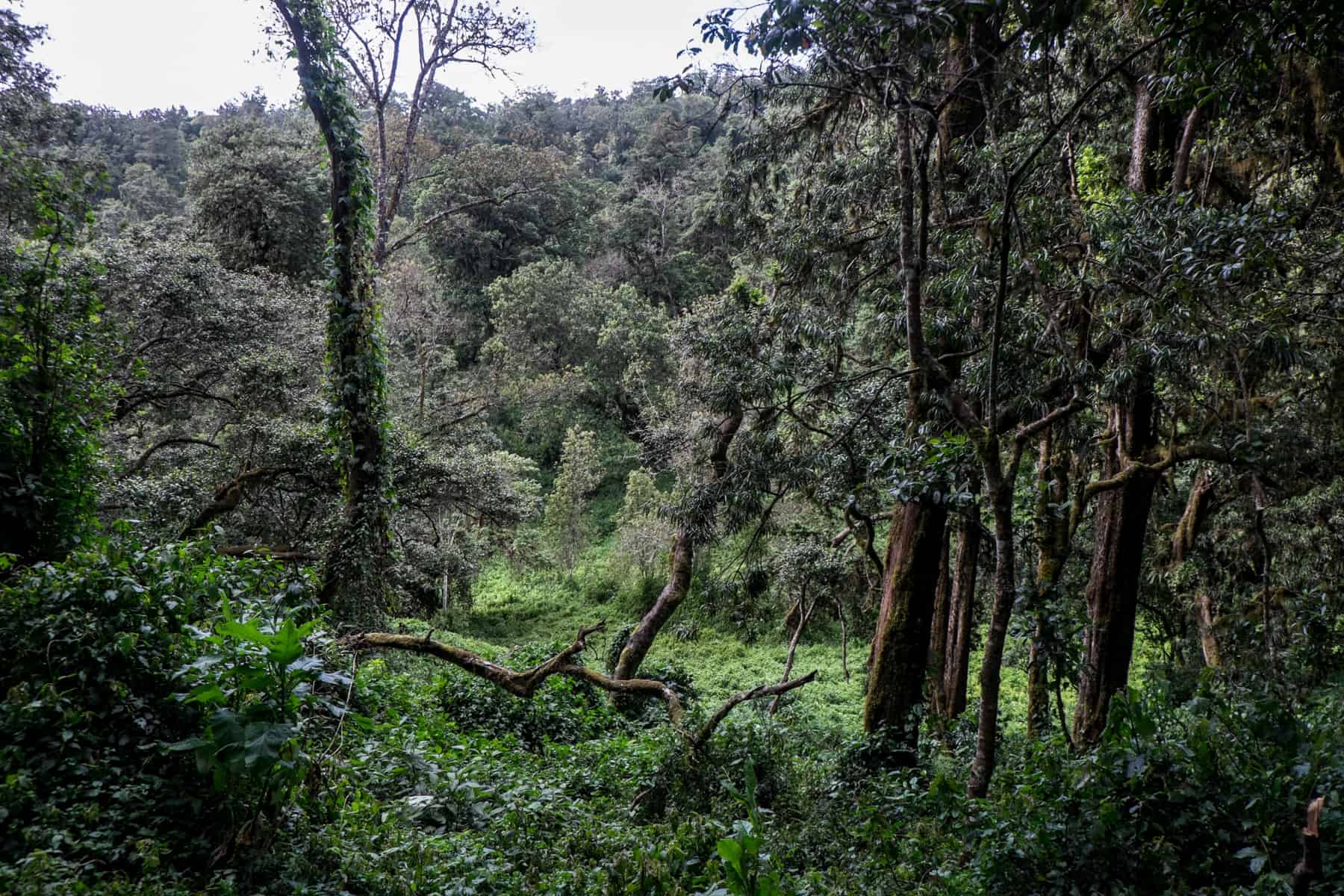
What keeps you going is the slow brewing warmth of lower altitude sun and the promise that there is time to sleep a little, before continuing on.
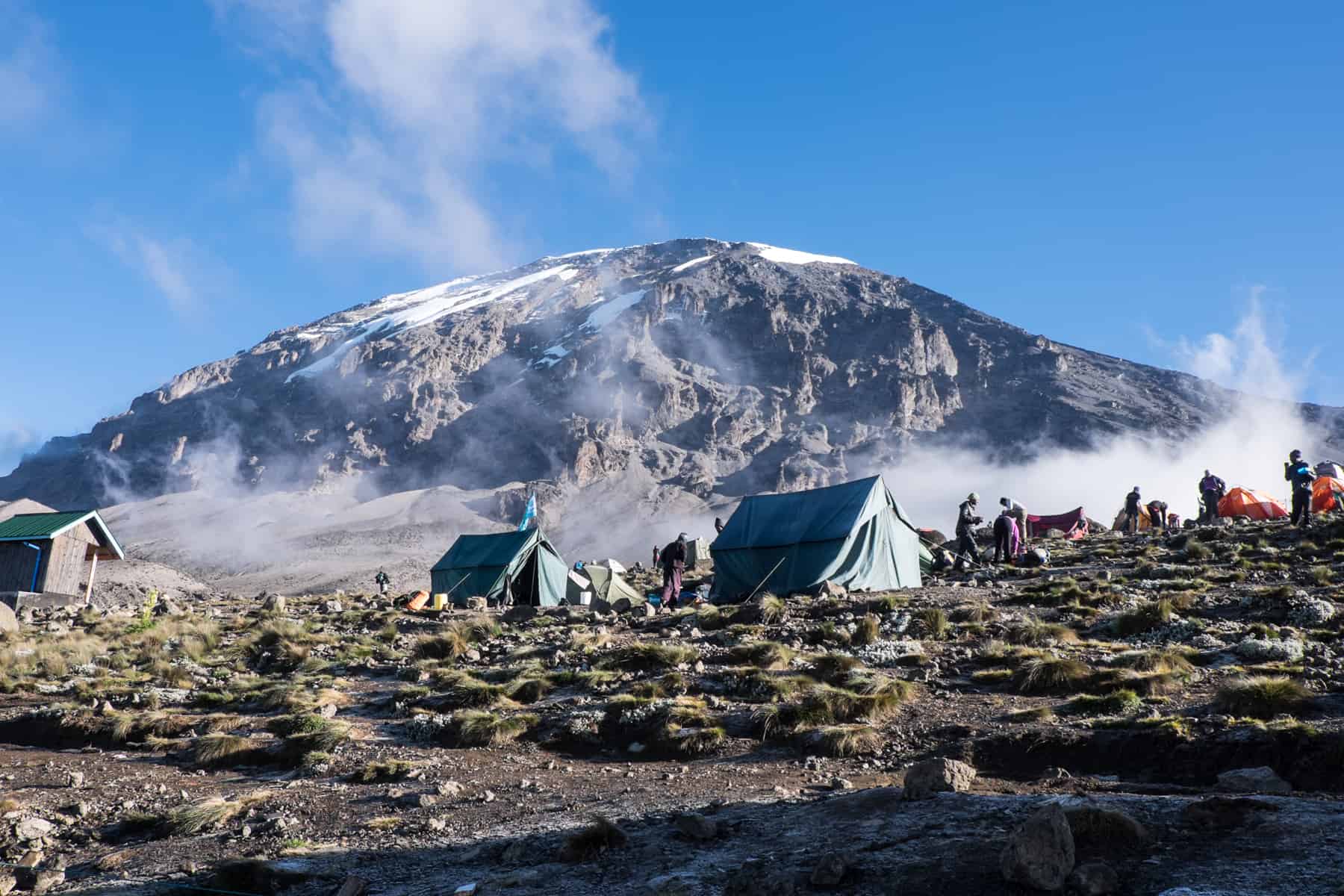
Serengeti Safari
There are two windows deemed to be the best time to climb Mt. Kilimanjaro, which correspond to the driest months of the year, and with warmer temperatures:
Other workouts
With Kilimanjaro, the camping can get to people, especially if you’ve never slept in a tent before. When the nights get cold and uncomfortable, it can push anyone’s limits. The stingingly cold weather and drenching rain downpour can strip out your positivity since there’s no way to dry off. The food can feel monotonous after a while and merely craving a comforting, wholesome meal makes you cranky. Someone in your group might start grating on you more than you would otherwise notice, and in your one mess tent and small camping circle, it’s hard to escape.
Incredibly, on Summit night, we were each paired with a guide or one of the most robust porters who would look out for us from start to finish in the return loop from Basecamp.

Kilimanjaro Lemosho Trek: Snapshot
Book a Small Adventure Group to Trek in Tanzania
In short, you have to do everything in your power to make yourself feel better.
Now you have a better idea which route you want to take, the next most crucial decision is with which tour operator to book your trek. With dozens of companies out there running variations of trips for hiking Kilimanjaro, it can be overwhelming.
It’s a long, arduous three to four-hour 7km climb to the Lava tower through rocky scree and into the Alpine Desert Zone. A hinterland with scattered boulders dusted with orange moss that turns to a greying moonscape. A burial ground for dead butterflies flown off course and swept here to meet their end.
What is the food like on Kilimanjaro?
- 8-day guided group trek up Mt Kilimanjaro’s Lemosho Route with local guides, cooks and porters.
- Additional “acclimatization day” during ascent.
- All Kilimanjaro National Park permits and fees.
- All transport between destinations and to/from included activities.
- Excludes cost of flights, insurances and trekking gear.
- You should budget for around £300 for tipping and souvenirs.
Snacks were plentiful, including popcorn and biscuits, alongside a steady supply of tea, coffee, hot chocolate and our favourite treat – ginger tea.


